PDBY PDBY
Student Leaders or Party Mouthpieces? The Crossroads of Student Politics
Live, Laugh Love through the Apocalypse How Gen Z Uses Humour to Cope with Trauma
“Is it a bird? Is it a plane? No, it’s Superman! Superman: The Original Superhero







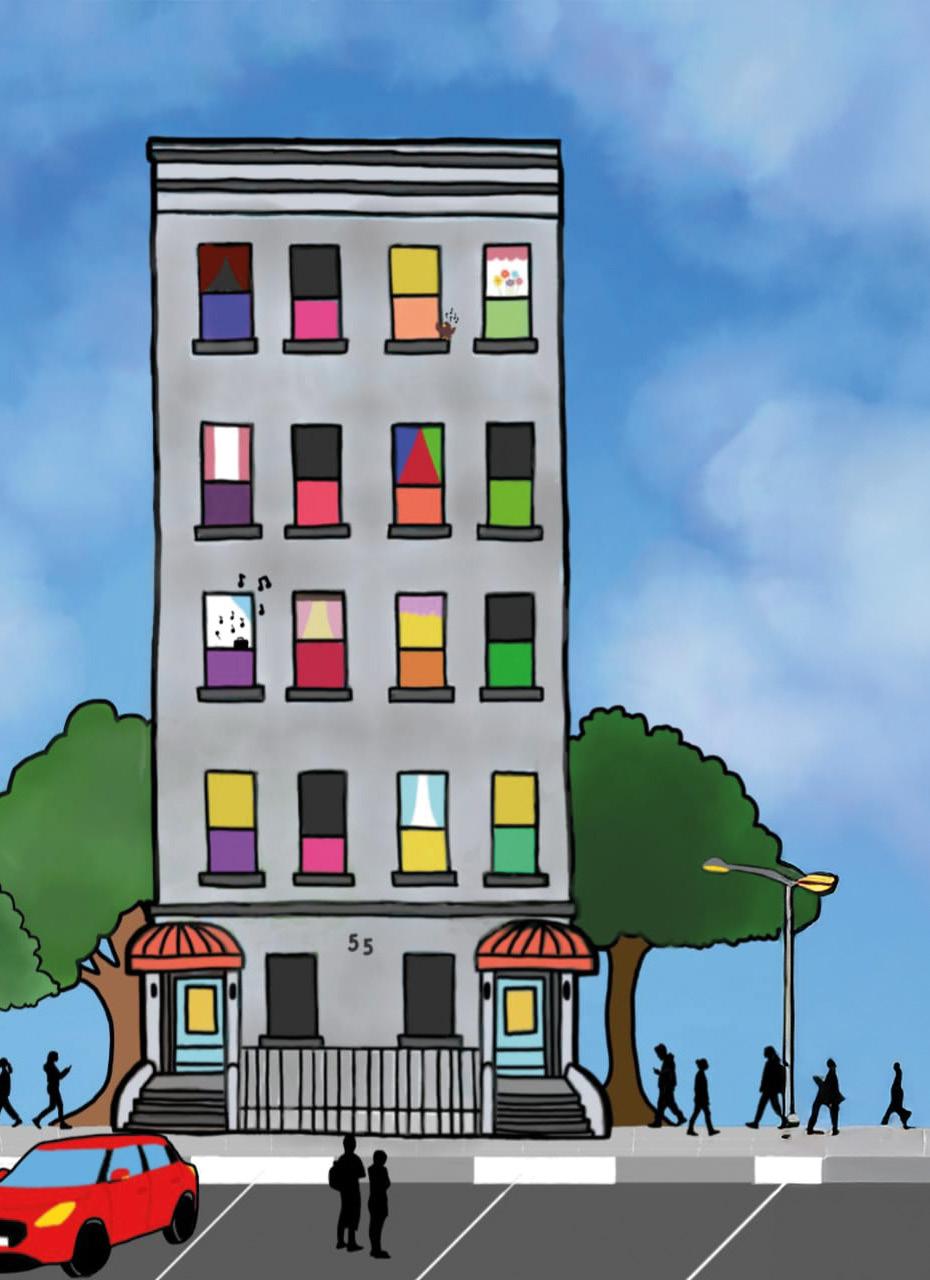

Student Leaders or Party Mouthpieces? The Crossroads of Student Politics
Live, Laugh Love through the Apocalypse How Gen Z Uses Humour to Cope with Trauma
“Is it a bird? Is it a plane? No, it’s Superman! Superman: The Original Superhero








Let’s chat AI. Don’t worry, this won’t become a rant about how AI is killing certain industries or leading to brainrot among people everywhere as they turn to it for help with assignments and job tasks. (However, I will say thank you for picking up this paper and reading it instead of just putting our articles into Chat and asking it to summarise the contents. You’re a real one. But also, the magic of Shoot Your Shot would be completely lost if you did that, or people resorted to using Chat to craft their shots.)
No, what I want to discuss is how AI is now being used outside of the academic or career context. How people are now turning to ChatGPT for more personal reasons. They are now asking this AI tool to put on the hat of therapist, confidant, and friend. I was alarmed to learn a few weeks ago of how dependent some have become on the opinion of a piece of code. A colleague of mine even admitted to having deep and highly meaningful convos with Chat almost every single day. And she’s just one example of a trend that’s emerging. Having a hard time deciding what to eat? Ask Chat for a recommendation. Wondering if you’re weird for not liking coffee? Have Chat explain why some people are smart enough to say no to caffeine. Had an argument with friends or family members? Feed Chat all the details (from your oh-so-objective point of view) and ask it to give you a breakdown of their personalities, why you don’t all get along and why you are justified in your reaction or opinion. Stressing about something and feeling that others might
not understand? Tell Chat all about it and request some supportive advice or even a diagnosis of your mental state.
What happened to the days of talking to your friends when something is bothering you? Heck, even just turning to Google or resorting to Reddit for answers? (I probably sound ancient for asking these questions, and now understand how the older generations must have felt about the internet and Googling everything.) Are kids going to start having AI friends? (“Mom, meet my friend Fred. He likes playing pretend, especially that there is an apocalypse and he becomes my robot overlord who thinks for me.”) Are we slowly losing sight of the importance of basic human interaction? Will we soon turn our backs on relationships in favour of artificial connections? These are most certainly very interesting and scary times to be alive.
Until next time, Karla


PS I did not consult with AI while writing this letter, so some might say that this is unfairly one-sided. Feel free to pop this into Chat and see what it has to say and what it thinks your opinion on the matter should be.


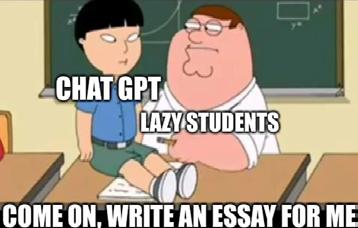
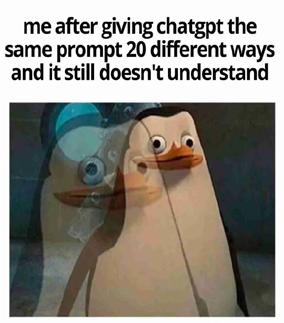

PDBYMedia, formerly Perdeby, is the official independent student newspaper of the University of Pretoria. We are committed to providing fresh and entertaining news content for UP students, by UP students, about UP issues.
www.pdby.co.za
Twitter: @PDBYMedia
Instagram: @PDBYMedia
Facebook: PDBYMedia
Tel: (012) 420 6597
Editorial
Editor-in-chief carel.willemse@up.ac.za
Carel Willemse @Ed_in_Chief
Editor editor@pdby.co.za
Karla van Dyk @pdbymedia
Deputy Editor digitalmanager@pdby.co.za
Kerri-Anne Swanepoel
News news@pdby.co.za
Jason Visser
Features features@pdby.co.za
Aleksa Kruger
Entertainment entertainment@pdby.co.za
Domonique Bennetts

To advertise in PDBY contact Tel: 012 420 6597 Cell: 083 318 9738 carel.willemse@up.ac.za Copyright
Sport sport@pdby.co.za
Neo Paledi
Copy copy@pdby.co.za
Hannah Roberts
Layout layout@pdby.co.za
Annelize Breed
Multimedia multimedia@pdby.co.za
Nicole Hagemann
Web webeditor@pdby.co.za
Owami Malobola
PDBY is printed by Paarlmedia. All
PDBY

PDBY appreciates that freedom of speech is an inalienable right enshrined in the Constitution of the Republic South Africa. We encourage our readers to engage in discussion and debate on issues that affect them through letters to the Editor, comments on our website, tweets, or posts on Facebook. We ask our readers to keep the following in mind:
1. PDBY will not edit letters, comments, tweets, or Facebook posts in any way.
2. PDBY will label letters, comments, tweets, or Facebook posts as opinion. These do not represent the views of PDBY in any way.
3. The PDBY editorial must approve letters, comments, tweets, or Facebook posts before they are published.
4. PDBY will not publish letters, comments, tweets, or Facebook posts that are defamatory, or libelous, or that contain offensive content.
5. PDBY reserves the right to practice discretion when publishing letters, comments, tweets, or Facebook posts.
6. PDBY reserves the right to publish any content we receive unless the sender specifically requests otherwise.
7. PDBY reserves the right to retract a letter, comment, tweet, or Facebook post after it has been published.
8. PDBY will not accept responsibility for any consequences the author of a letter, comments, tweets, or Facebook posts may experience as a result of the letter being published.
9. PDBY will only publish letters between 150 and 200 words.
10. PDBY will not publish letters unless the writer confirms their full name, student number and contact number. PDBY will not publish this information, we need it for our records.
Relebogile Manana
On 15 June, the University of Pretoria (UP) found itself at the centre of a national conversation following ENCA’s Youth Day segment where SRC representatives from UP, the University of Johannesburg (UJ), and the University of the Witwatersrand (Wits) discussed the continued relevance of political organisations within campus governance structures. Representing UP on the panel was SRC Secretary Eulene Bornman, whose call for a stricter separation between political parties and student governance sparked praise from some and fierce backlash from others. Arguing that campus leadership should focus on inclusive service delivery rather than national party loyalty, Bornman’s remarks were quickly condemned by the EFF Student Command at UP (EFFSC UP), who accused her of promoting an “anti-transformative” rhetoric and demanded her resignation.
In an interview with PDBY, Bornman elaborated on her position, saying that while student political organisations have historically played an important role in mobilising change, “we should remove the focus from being dominant and divisive to rather advocate for student interests and hold the institution more accountable”. She further elaborated that student governance exists to serve all students and not just the ambitions of national parties. She also said that when students vote, they should do so purely based on a candidate’s track record and their ability to represent all students, not on the colour of their party shirt.
Bornman proposed that reform should be driven by the Department of Student Affairs (DSA) through clearer campaign regulations, candidate vetting, and voter education. “Currently, less than 15% of students vote during SRC elections. That shows that the system is not inclusive but rather dominated by loud partisan voices that alienate the rest,” she shared.
The EFFSC UP, however, sees Bornman’s statements differently. In a statement sent to PDBY, they characterised her remarks as anti-transformative and "backward conservative". They said, “The University of Pretoria is still behind in terms of transformation. It is therefore backwards for Eulene to demean the involvement of students’ activism on the basis of them being influenced by political organisations. This behaviour is only common in white supremacists of AfriForum.”
Bornman has since defended herself against claims that she supports AfriForum’s ideology, clarifying that she is no longer affiliated with AfriForum and now works under DASO UP, whose values, she says, align more closely with her focus on inclusive governance. “Both EFFSC UP and AfriForum have called me anti-transformative. That says more about the extremes of our political climate than about me. I’m advocating for the middle, for common ground.” She continued that student leaders should be held accountable to all students and not just those who share their political beliefs.
On the other hand, EFFSC UP defended the historic role of political organisations in student activism, referencing major student movements such as #FeesMustFall and #AfrikaansMustFall. “Many progressive protests in this institution were led by student activists in political formations. These organisations brought about the greatest student unity we've ever seen at this university. Her comments discredit the real contributions of these groups. We therefore maintain our demand for her resignation.”
EFFSC UP also dismissed the notion that political affiliations diminish student leadership credibility, citing the broader democratic context. “The University of Pretoria and all its counterparts are governed by national laws. It’s impossible to suggest student leaders must not be politically influenced when political participation is a constitutional right. A good leader practices their right to vote and influence policy. Student movements aligned with parties are shaped by the youth and the students within them.”

Beyond their critique of Bornman, EFFSC UP used the opportunity to call out broader system failures both at UP and in South Africa’s political leadership. “Ourselves, we are victims of people who participate in stomach politics as [the] government, which was supposed to enhance the people, ends up feeding the elites and their families. However, it's only through genuine participation to end this conduct that will save us, [so] students need to ask themselves, ‘If I don't participate in changing my own society, who will?’”
As the second semester commences, this confrontation raises questions about the future of student governance and the role of political organisations within universities. For Bornman, change starts with integrity and inclusion. For EFFSC UP, it begins with transformational leadership and unapologetic advocacy. Whether anything will change in the upcoming SRC elections, the broader student body will need to decide.
Mpho Mahlangu
In an enlightening conversation with outgoing Politics@Tuks Co-Founder and Secretary Luke Reilly, PDBY learnt what the sub-house is all about. He explained: “Politics@Tuks is the student arm of the Political Sciences Department here at UP. We primarily act to organise and initiate events we feel would benefit and enrich students by getting them to engage with politics. This typically involves hosting major political figures or visiting the places where politics are made real. Things like hosting the Swedish Ambassador, the Mayor of Pretoria, the political cartoonist Zapiro, or organising a student trip to DIRCO are all initiatives we at Politics@ Tuks succeeded in bringing to students with the help of the Political Sciences Department.”
With Reilly leaving and handing over to the new Executive Committee (EC), he said, “This new EC has campaigned extremely passionately, and when they put that energy into the support structures and networks they have inherited, I know there will be bigger and better things to come. The pressure of high expectations is, in this case, all for the best.”
PDBY spoke to Sihle Nzuza, the new Chairperson of Politics@ Tuks, and he gladly shared his goals for the role: “As the incoming Chairperson of P@T, I am deeply motivated to continue building a sub-house that speaks directly to the lived realities and aspirations of students. One of my biggest goals is to expand access, ensuring that students who may feel disconnected or disillusioned with political institutions find a space within Politics@Tuks to feel seen, heard, and empowered. I would like us to focus more on community-building within the Political Sciences student body, facilitating spaces for peer support, mentorship, and academic and skills development. I also plan to deepen and expand our partnerships with departments, embassies, think tanks, and civil society to expose students to the professional world beyond the classroom. We want students to leave events with [not only] knowledge, but also direction, contacts, and inspiration. I see the sub-house as a platform for conscientising the next generation of political thinkers and doers. And with South Africa's rapidly evolving political landscape, students must be at the centre of change. Through critical engagement, we can shape an inclusive, just, and democratic future, and my aim is that P@T plays a pivotal role in that journey.”
Nzuza shared a passionate vision that inspired him to run for EC: “My decision to run for EC came from a personal place. As someone deeply passionate about politics, youth engagement, and education,
I have often seen the disconnect between what we learn and what we experience, and between young people's potential and the limited spaces we are given to express it. Being a Youth Advisor at the Swedish Embassy (through P@T, might I add) and a spokesperson at P@T taught me the value of meaningful representation and how powerful it is when young people are included in spaces of decision-making. I wanted to bring that same spirit into the next Politics@Tuks team – to help create a sub-house that not only connects students to careers, but also gives them confidence in their own agency. We are often told politics is not for us, or that it is tainted. But I see political science differently. I see it as a discipline that can inform justice, build better societies, and open up futures. I ran for EC because I want more students, especially those who feel sidelined, to see themselves as political beings with influence and ideas worth sharing. Politics@Tuks is our space, and I wanted to be part of shaping it into something powerful, grounded, and truly representative of our generation's potential.”
Aluta Gaulana, Deputy Chairperson and Academics EC, further supported Nzuza’s claims by saying: “Looking back, the previous EC achieved so much; they hosted well-attended events and opened important conversations. But there were also gaps, like a lack of deep reflection after events and communication challenges. These lessons are guiding us now as we move forward with more intentionality and structure. As the new EC, our plans are rooted in reflection and purpose. We want the sub-house to feel more united, intentional, and impactful. With a larger and more diverse [EC] this year, we’re better equipped to carry the vision together and share responsibilities more effectively. We are committing to stronger accountability and clearer roles to ensure every member is proactive and aligned. This year, we aim to host four major events that sharpen students’ debating and communication skills. We are using social media to hear directly from students and shape events around their needs. Through partnerships with departments and external organisations, we’ll build sustainable, skills-driven programming that supports all students. This is not just about this term – it’s about creating a legacy of continuity, growth, and impact that lasts far beyond us.”
Lastly, Gaulana exuberantly expressed how the sub-house supports and empowers UP students, sharing, “The sub-house supports UP students by creating inclusive, empowering spaces where every student can grow, not just leaders. Through debates, workshops, and career-focused events, we help students become more confident, skilled, and connected. This year, we're focused on practical learning, active engagement, and strong collaboration with departments because every student should feel that this sub-house is for them.”
Jason Visser & Datis du Preez
PDBY was on the ground at the 2025 National Biosecurity Summit hosted from 10 to 11 June at the Sanlam Auditorium on Hatfield campus. Under the theme “Collaborative Actions for Food Security and Trade”, ministers, regulators, industry leaders, researchers, and students gathered to shape a five‑year national biosecurity strategy aimed at fortifying South Africa’s agricultural resilience.
Vice-Chancellor Prof. Francis Petersen opened the summit by welcoming delegates. His address was followed by an insightful keynote speech from Prof. Andrew Robinson of the University of Melbourne’s Centre of Excellence for Biosecurity Risk Analysis. Wandile Sihlobo of the Agricultural Business Chamber set the tone by highlighting the stark reality that over 60% of South African households face food insecurity, underscoring how trade, nutrition, and biosecurity are inextricably linked.
Minister of Agriculture John Steenhuisen delivered a candid address that struck a chord throughout the hall. Reflecting on recent outbreaks of avian influenza (better known as bird flu) and foot-and-mouth disease, he warned that reactive responses are no longer sufficient. “We need a new national biosecurity compact,” he declared, urging all sectors to assume joint ownership of solutions. In an exclusive interview with PDBY, he challenged aspiring scientists: “The first thing I ask students is [this]: please study Veterinary Sciences. We need as many vets in the country as possible. We are at a huge shortage. And if you are looking for a job, there is no shortage of jobs available in [the] veterinary sector. Biosecurity must be everyone’s responsibility. We need to be the eyes and ears of the department on the ground. Collaboration across science, technology, AI, machine learning, and engineering has huge applications in agriculture, and there is massive potential here to drive economic growth and tackle unemployment.”
The summit also put a spotlight on enforcement. Minister Steenhuisen revealed plans to pursue criminal charges against those who violate biosecurity regulations, from illegal animal movements to stock theft. He floated the idea of a dedicated Biosecurity Act with built-in offence codes designed to empower law enforcement and the courts.
Behind the scenes, the Faculty of Veterinary Science at UP is gearing up to play a pivotal role. Faculty Dean Prof. Vinny Naidoo emphasised that the faculty’s mission extends beyond clinical practice. He said, “We train the next generation of vets and researchers, but we also develop diagnostic tests, surveillance tools, and vaccines. Clinical management is one side; molecular biology and the basic sciences are equally vital. Some of our top researchers have no veterinary background, yet their work in disease diagnostics is transforming our response capabilities.”
Prof. Naidoo also stressed the urgent need to retain graduates in rural and underserved areas, and to expand internship and training posts to close the yawning gap of 400 vets needed in the public sector.
Throughout the two days, delegates repeatedly returned to the National Biosecurity Hub that was launched in 2022 by the Department of Agriculture, the Department of Science and Innovation, and the university. Described as “a new way of thinking,” the hub will facilitate real‑time data exchanges, field diagnostics, and risk assessments, empowering decision-makers to act early and decisively.
The summit’s most resonant message came down to shared responsibility. From asking students to report illegal animal movements to urging citizens to support traceability systems, organisers made it clear: safeguarding our food systems is everyone’s business. Minister Steenhuisen concluded, “A good plan violently executed today is better than a perfect plan executed next week. Let us go out and execute our biosecurity initiatives so that South Africa cannot just defend against risk, but win the world championship of agricultural innovation.”
With new legislative ideas, cutting-edge diagnostics, and a renewed commitment to collaboration, the 2025 National Biosecurity Summit has set South Africa on a course to secure its fields, markets, and future.

Hannah Hambly
During the July holidays, a survey revealed that academic burnout is a significant reality for university students, with 90% of participants reporting burnout after the previous semester. This was echoed in an Instagram poll run by PDBY, in which 83% of respondents felt drained after exams. As we step into the new semester, it is crucial for students and academic staff to acknowledge this challenge and equip ourselves with strategies to recover and prevent burnout from taking hold of us again.
An anonymous statement submitted to PDBY summed up the ongoing narrative – “If you don’t feel burnout, then you’re doing something wrong.” This view normalises exhaustion and how it may be expected to attain the proper performance. This is an isolating experience as many feel that they cannot talk about their stress because it is “natural” to feel this way and the academic staff do not understand. This was reflected in the questionnaire where 37% of participants felt that the academic staff did not understand or care about how stressed students were, and 53% stated that only some of them understood.
When asked “what is one thing you wish you had done differently last semester”, no one answered that they should have reached out to staff, other students, or student support resources such as the Student Counselling Unit. However, many students were rather introspective, saying that they should have “managed their time better”, registered at a different university, “managed… emotions better”, or even “put mental health on the backburner… because we are so overburdened with work”. This illustrates that academia can be an isolating experience, and students often feel as if they are alone. An anonymous source agreed with this and said that they felt like their faculty “doesn’t even care”.
Everyone at a tertiary institution can acknowledge that university is difficult, but it is because it is there to equip us for the future. But can we accept the full extent of this difficulty when someone has said they cannot get sick because they “cannot afford to take time
off with their degree”? Is this difficulty sustainable for students where they feel their test schedule is “detrimental”? It seems that a major problem for students is that they feel they lack time. In the Instagram poll, an overwhelming majority voted that their top priority is better time management. So, we can implore the university to take notice of this plight and offer greater institutional support, and we can hope that more students reach out to their faculties and the student support resources.
For our own peace of mind, there are certain proactive strategies that we can adopt to combat burnout and ensure that we perform to the best of our abilities this semester.
1. Setting Realistic Expectations as Part of Self-Care
A big part of self-care is setting realistic expectations for yourself and avoiding overcommitting to too many things. Many students set unrealistically high expectations not only for test scores or assignments, but even simple things such as getting perfect notes done by a specific date and attending every lecture of the year. This perfectionist mindset is not sustainable. We need to learn that progress is key, and good things take time to develop.
2. Effective Time Management
It is important to prioritise tasks and create realistic schedules by giving yourself more time than is needed. Break down your assignments and tests (pulling all-nighters before your tests is not the way to go), and make use of a calendar and various to-do lists.
3. Seeking Social Support
Talk to your loved ones and maintain relationships that reduce your stress and add value to your life. An important part of this is having a reliable network to lean on. This can consist of people who help you manage your stress, take notes when you cannot, or even remind you that you are not alone.

4. Orthodox Self-Care
Self-care is more than just bubble baths and getting your nails done (although that can be beneficial). It also involves developing healthy habits such as getting enough sleep, maintaining a balanced diet, and engaging in regular physical activity, like taking a walk among the cows on the Future Africa campus.
5. Campus Resources
Ensure that you make use of campus support services such as the Student Counselling Unit or Academic Success Coaches when you are struggling. Even consulting with your lecturers may help you combat burnout.
While many students have recognised the importance of these strategies, the overwhelming consensus seems to be that the implementation of test week for the whole university remains a major source of stress. Some have expressed that it feels as though the institution has neglected them. For students living in Pretoria, this academic pressure is often ten times worse because of ongoing issues such as water outages and power cuts.
The important reality is that, as students, we do not live in a vacuum. We need to rely on all of the resources available, including personal resilience and institutional support, to help combat burnout and ensure that we can perform our best.
du Preez and Jason Visser
After nearly three decades, the iconic campus café Coffee Buzz has closed its doors. As the UP community reflects on the end of an era, PDBY had the opportunity to interview Ms Nicolaou, the owner, and her son, Carl Nicolaou.

Coffee Buzz originally opened as House of Coffees in March 1996, but was soon rebranded to the beloved café that anchored the Student Centre for 29 years. Known as a popular study spot because of its large seating area, Coffee Buzz saw continued success because of its unique approach to business. At the heart of its success lay favourable prices and great service focused on students. Baristas knew their customers by name and the owners were directly involved in the day-to-day operations – an “old school” approach when you compare it to that of modern franchises. Furthermore, some of the staff began working there since its inception. “A few of our staff had not gone on retirement yet [when we closed],” Ms Nicolaou said. This allowed for a sense of community and laid the foundations for the enduring legacy of Coffee Buzz.
Coffee Buzz is no stranger to adversity, but the perseverance of its owners continues to inspire many. Unfortunately, in 2013, Mr Nicolaou passed away. Ms Nicolaou took over the business and ensured its prolonged success for another decade. Coffee Buzz was also not immune to the devastating effects of the global pandemic in 2020. “I ordered stock because I knew the whole sequence,” she explained, referring to the usual preparations she made for the new academic year. “And then Covid happened, and we closed, and we lost all that stock.” She continued, “The rent eventually, because they gave us grace for a few months, [still needed to be paid], but then it just carried on, you know, and then we sort of fell back on that because there was no income.” The result of a global lockdown and changing consumer behaviour led to further strain on the business. Students became drawn to the newer name brands that opened around campus, and after COVID-19, students spent more and more time doing school online. After the restrictions were lifted, the family reopened the café and operated for two more years, but things were never the same. “It just never got back to what it was before Covid,” Ms Nicolaou said. “It never got that traction.” By April 2025, they made the decision to close their doors permanently.
Ms Nicolaou extends her gratitude and appreciation to the entire UP community: students, lecturers, and staff. She notes that she is extremely grateful to the university itself, and that “nothing lasts forever, but that makes it, however long it was, more worth it”. Ms Nicolaou adds that this is, understandably, a very emotional time. The store’s roots were deeply personal to the family. “It was my mom and [dad] who opened the store in 1996,” said her son, Carl. “It was a family [business].” He recalls how he would help run the business over the weekend, and how, after school, he
would cross the street and enjoy a cup of coffee with his friends. His sister and her friends would also regularly meet up at Coffee Buzz. “Everybody knew everybody”, they added. The staff had the regulars’ orders memorised. “I mean, the barista would see someone three heads behind, and he knew that he wanted a latte, and he'd already have it there, you know… so when that guy [got to the front], there's your coffee. The staff were also amazing…” Ms Nicolaou believes that it was their passion for Coffee Buzz and their direct involvement in the business that drew such a loyal customer base.
A big aim of theirs was to create an environment where students could study in comfort. “It wasn’t just a place to get coffee –they all became very friendly.” Coffee Buzz was the preferred study spot on campus. “If five or six people came as a group and two people bought [something], I mean, that was fine,” she said. “They liked the atmosphere and studying there. It was never empty.”
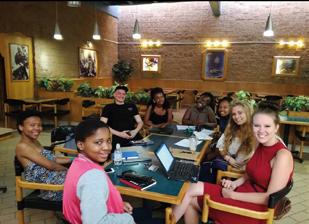
you for being such excellent communication partners!” Student Health Services summed up their appreciation simply: “Without your contribution, it was impossible to do this event. Thanks a lot.” The 2014 leaders of TuksChess Godfrey Kgatle and Sibongile Maswanganye wrote, “Without your support, we would not have been able to attend the tournament… This is an experience the players will treasure for life.” Nonise Euthimion from the Unit for Development concluded a festive season note with, “Thank you for your support. Best wishes for the festive season.”

Ms Nicolaou notes that they never worried about money. “We [were] here to make money, but that was not our priority.” Her husband would joke with her about this mindset, but the family always prioritised good service above all else.
After all their hard work, a well-deserved retirement awaits them. Ms Nicolaou says that she still feels emotional when walking past the now-empty shop. “If I was 20 years younger,” she said, “I would have tried to get in there… because I did not want it to end like that.” Reflecting on their impact, she said, “It is just, you know, a legacy that we have left now.”
Over the years, Coffee Buzz had received heartfelt letters from every corner of campus, underscoring its deep community ties. In December 2004, Karen Harris and Johan Bergh of the Historical Association of South Africa thanked the café, writing, “Everything was so professionally done and absolutely on time. Thank you also for giving us the best rates possible… We are really grateful to you for this invaluable support.”

Mrs Wendy Hartman of the Marketing Department acknowledged a R100 grant by saying, “Your financial and moral support is… of great assistance in our endeavours… Your investment in education is greatly appreciated.” On 15 May 2007, Shanna Nienaber, Chairperson of CantaTuks, wrote, “The meals that you provided for our judges were thoroughly enjoyed by all… it truly helped us to make this year’s CantaTuks a memorable experience.”
On 20 October 2011, Sandra Klopper, previous Dean of the Faculty of Humanities, said “The event was a huge success, in part due to your support.” The Centre for Augmentative and Alternative Communication thanked Coffee Buzz twice, “Your support to the project is highly appreciated,” and later, “The young people with severe communication disabilities really enjoyed the race… Thank
Coffee Buzz’s menu evolved in step with students’ tastes and budgets. Early 2000s flyers offered R4 filter coffees, R6 pies, R5 muffins, and R7 greek salads. By the late 2000s, tramazzinis, milkshakes, and freshly squeezed juices joined the line-up with most items still being priced at under R7. After reopening in 2023, the café expanded to wraps, baguettes, specialty coffees, pizzas, and “the tastiest, sauciest chicken strips on campus”, maintaining affordability and variety.
Old PDBY articles capture Coffee Buzz’s role in creating a vibrant student life. A 2008 Jaco Jordaan guide deemed them “onverbeterlik” (unbeatable) for their “verkwikkende koppie boeretroos” (invigorating cup of coffee), while warning BA students of a possible addiction to their coffee. The “Buzz-tannie mal oor studente” (“Buzz owner crazy about students”) profile quoted Vaso Nicolaou: “Ek raak so maklik geheg aan… asof hulle my eie kinders is.” (“I get attached so quickly… as if they are my own children.”) A 2011 PDBY fundraising piece noted that beads could be bought at “Piazza Foods, Campus Kiosk, and Coffee Buzz”, and a 2012 feature recalled “lazy afternoons spent eating cake from Coffee Buzz on the HSB grass”. Campus dining guides from 2019 repeatedly included Coffee Buzz among the Hatfield eateries, praising its friendly service and student-friendly prices.
Coffee Buzz’s achievements were formally recognised from the very beginning. In 2000/2001, the Student Representative Council (SRC) awarded service certificates to Vaso and Chris Nicolaou “on behalf of the student community of the University of Pretoria”. Beyond the SRC honours, the café’s consistent award of best coffee in PDBY, its sponsorship of events like CantaTuks, Hospitality Association of South Africa (HASA) conferences, secretaries’ functions, Centre for Augmentative & Alternative Communication (CAAC) projects, and University Sports South Africa (USSA) chess tournaments attest to a legacy of service and unwavering support for every corner of campus life.
The impact of Coffee Buzz on UP is immeasurable. It has been a staple in the Student Centre for almost 30 years, rooted in community and excellent service. Coffee Buzz will be dearly missed, but its legacy will remain in many students’ hearts for years to come. Their unique approach to business serves as a reminder that, sometimes, the heart behind the cup matters most.
Lutricia Phiri
One of the most challenging periods in a student’s academic journey is facing the possibility of losing their place at a higher education institution such as the University of Pretoria (UP). Studying at a university is not only a significant personal achievement, but it is also a life-changing opportunity to start your professional journey. For many students, the looming threat of academic exclusion turns this opportunity into a time riddled with anxiety and uncertainty.
With thousands of students enrolled at UP for the 2025 academic year, only a portion will successfully progress into the next semester. The university’s commitment to academic excellence is non-negotiable, and students who do not meet the academic criteria often face exclusion before the semester even ends.
According to Micaela Wathen, the SRC’s Academics: Student Engagement Representative and an honours student in Marketing Management, academic exclusion occurs when a student fails to meet the academic requirements of the university or their specific faculty. “The general rule is that students must pass at least 80% of all the required modules they are registered for in a given academic year. Failure to do so leads to exclusion,” Wathen explained. “Faculties such as Health Sciences and Veterinary Sciences may apply different rules, especially where module failure results in repeating the entire year.”
Wathen also highlighted the importance of understanding faculty-specific regulations and prerequisites. “Failing prerequisite modules can extend one’s degree by an additional year. Moreover, students who exceed their N+1 years of study or fail to meet conditions after a previous exclusion may be excluded again,” she added.
An anonymous UP student spoke to PDBY and shared her personal experience of academic exclusion: “I was completely caught off guard when I received the email stating I had been academically excluded. I was devastated and felt completely lost. I feared for my future and did
not want to give up on my dreams.”
Determined to not surrender, she sought advice from relevant parties including SRC representatives and prepared an appeal. With valid reasons supported by the university’s policies, she was ultimately granted permission to re-enrol. However, she had to re-enrol for a different course within the Faculty of Natural and Agricultural Sciences. She explained, “It was not easy, but I realised that exclusion does not mean the end. It can be a second chance if approached with persistence and the right guidance.”
The SRC’s
The SRC plays an essential role in supporting
“We assist students by providing information on what exclusion entails, how to appeal, and how best to structure an appeal letter,” Wathen explained. “The appeal process allows students to explain the circumstances that contributed to their poor performance, such as bereavement, illness, financial difficulties, or mental health challenges. These are considered valid because no student underperforms without a reason.”
In addition, the SRC Academics Representatives offer training to Faculty House Academics Representatives, equipping them to assist students within their faculties. This decentralised support structure ensures that more student leaders are available to provide guidance.
Furthermore, the SRC has representation on the Senate Review Committee, which plays a crucial role in the final evaluation of appeal cases.

There, they advocate directly on behalf of the student body.
Mid-Year Exclusions and Faculty-Specific Practices
Although complete data on exclusions is not yet available, Wathen noted that only three faculties implemented mid-year exclusions: Engineering, Built Environment, and
Information Technology (EBIT), Natural and Agricultural Sciences (NAS), and Theology and Religion. In these faculties, exclusion notices are currently being issued.
How Does the Appeals Process Work?
Unlike a standardised checklist, there is no single set of criteria that determines whether a student will be readmitted after exclusion. Each appeal is handled on a case-by-case basis by a Faculty Committee that includes student representation from the Faculty Houses. “The committee considers all submitted evidence, the student’s academic records, and their appeal letter,” Wathen said. “They assess the impact and timing of external challenges, corrective steps taken by the student, and their plans for academic improvement.”
If the appeal is successful, students are allowed to return under strict conditions such as passing specific modules or achieving certain grades. Failure to meet these readmission conditions may result in further exclusion.
Who Should Students Contact for Help?
Wathen recommends that students first contact their Faculty House Academic Representatives who are best positioned to communicate with faculty structures. Their contact information is typically available on the respective Faculty House social media platforms, particularly Instagram. However, Wathen emphasised that the SRC is always willing to assist any student who reaches out to them.
A Message of Hope
Although academic exclusion is a serious and often distressing situation, it is not insurmountable. Many students, though disheartened, have successfully returned to complete their studies stronger, wiser, and more determined. “Whether a student appeals and succeeds, or has to take time away and return later, it is important to remember that exclusion is not the end of one’s academic path,” Wathen affirmed. Ultimately, persistence, self-reflection, and seeking appropriate support are key. Dust yourself off, reach out for help, and come back stronger.
Between the grand halls of fantasy and the neon-lit corridors of sci a debate rages: how do students prefer to consume their news? A recent Instagram poll by PDBY asked exactly that, and the results were surprising. 71% of respondents confessed to having a soft spot for print while an overwhelming 86% acknowledged that online outlets deliver updates faster. 85% of students said the tactile rustle of newspapers enriches their reading experience, and 94% agreed that a newspaper carries a nostalgic charm.

Yet when it comes to interactivity, embedded videos, live polls, and animated graphics, 40% of respondents do not feel a strong engagement
The clash between print and news is like choosing between fantasy and science fiction. Print offers the simple pleasure of holding a newspaper, turning its pages, and savouring each article at your own pace. Online news, by contrast, is all about instant updates, push
notifications, live feeds, and scroll-through headlines that keep you glued to your screen.
Tuks alumnus and social media influencer Orabile Mashigo, better known as @ mashnotpotatoes online, recently debuted his own segment on the Dan Corder Show, and he captures this duality with characteristic frankness. “Print and online in South Africa… it’s a bit of a 50-50,” he observes. “A lot of South Africans don’t have expendable income to be sending out R14 or R20 for a newspaper. Even if they do, young people’s attention spans have drastically decreased and they don’t have the time to sit down and read an entire newspaper.” And yet, the crucial long reads that probe the nooks and crannies of our society often lurk behind digital paywalls. “I have a subscription with News24, but that’s rare. Many don’t see the value in it.”
Mashigo’s diagnosis goes deeper: news outlets still see themselves primarily as “newspapers”,
he argues, rather than as multimedia houses. He points to innovators like Daily Maverick who bolster their written reporting with YouTube explainers and TikTok clips to meet young audiences where they live. “They’re not just sticking to their print or online sites,” he says. “They’re branching out.”
As the debate unfolds, one thing is clear: print and online are not mortal enemies. Rather, they are companions on a broader media quest. The romance of printed news, as shown by 94% nostalgia among students, need not be sacrificed at the altar of convenience. Neither should the hunger for immediacy and engagement, affirmed by 86% of voters and tempered only by digital fatigue among some. Perhaps the future of student journalism lies not in choosing one genre over the other, but in crafting a hybrid narrative where fantasy’s tactile magic and sci-fi’s boundless speed fuse into a new, richer story.

Visual: Nicole Hagemann
In the face of complete global chaos, economic and political instability, severe climate change, and a looming world war, our generation has turned to a peculiar coping mechanism: humour. Dark, ironic, sarcastic, and sometimes absolutely absurd humour. Whether it’s making self-deprecating memes about your deteriorating mental state or sharing outfit inspirations for World War III, Gen Z’s humour may seem bizarre, but behind this satirical veil lies something much deeper. Are we hiding our denial by joking around about current affairs, or is this coping mechanism a powerful tool that unites us during times of uncertainty?
Linguistics academic L. Grundelingh says that Generation Z doesn’t just use memes for entertainment; we use them to communicate complex feelings, often throughout serious and unprecedented times. 2025 has been a crazy, turbulent year so far with political affairs between countries causing mass anxiety among millions. Platforms such as TikTok and X are often at the forefront during these times, providing information immediately without having to switch on a local news channel.
These platforms light up, not just with news, but with millions of instant reactions, relatable, humorous commentary, and edits with dramatic music displaying protests and tragic events. Some may see these videos as mocking or nihilistic, but it’s often the complete opposite – it is merely a way for the younger generations to cope with the world around them.
It is crucial to understand that humour is often deeply rooted in trauma – both lived trauma and inherited trauma. Many of us have grown up in a country known for its dangers, violence, and political instability. Five years ago, along with the COVID 19 pandemic, a lot of things changed. Normalcy and safety changed, and our humour reflects that. It is layered, fragmented, and often borders on heartbreak.
In many ways, this type of humour shows resilience. We may be the younger generation, we may not be able to control what is happening in the world around us, but at least we are going through it together. There is a strange comfort in this realisation – behind every meme, every relatable and sarcastic comment, every bizarre point of view, is someone who understands what you are going through. We cry together, and we laugh together.
Of course, this coping mechanism also has its dangers. We may feel as though others understand what we are feeling, but it is still important to talk to those around us when we feel scared or anxious instead of relying solely on social media platforms. We should always ask ourselves the question: are we laughing to relate, or laughing to avoid?
Ultimately, Gen Z’s humour is a true reflection of our adaptability. Our response to trauma and chaos in a broken world may not fix anything about it, but it does bring us closer to people who understand what we are facing. We are truly living through history in the making, so we might as well live, laugh, and love through it.
Mazviita Pasi
Accommodation. Boo! Much like “employment”, this word is enough to strike fear in the hearts of any student living in Hatfield. The mere mention of this sends a shiver down your spine and your palms get sweaty as you have flashbacks of cockroaches and sky-high booking fees. The world of accommodation is a treacherous one, but with these tips, you can stay on your toes and have a one-up on those cockroaches.
DO book a viewing/ask a friend staying there to view their place.
DON’T rely on pictures from the website alone.
Student accommodation is a business venture that is aimed at making a profit. Naturally, residence management will want to put their best foot forward in order to lure students in. Many places boast their top-tier accommodation with quality, worldclass facilities showcased in professionally touched-up photos. Students who are nonethe-wiser are reeled in only to find out that all that glittered was not gold. But at this point, you will already be knee-deep in monthly rentals with no chance of ever getting that initial booking fee back.
A certain luxurious student accommodation that guarantees top-notch facilities is described in a Google review as a “matchbox that would be a nightmare for even the least claustrophobic person”. Spare yourself the disappointment and visit the accommodation in person. You can set your own expectations about the size of your room, the standard of cleanliness, the quality of the facilities, and the furniture. Don’t be fooled by catchy
corporate taglines promising modernity and luxury.
Visiting the accommodation also gives you a realistic idea of the distance. That 1.4km distance may not feel like much of a walk when you see it on Google Maps, but it can be a drag when rushing to a 7:30 lecture.
DO check Google Reviews.
DON’T rely on reviews on the accommodation website.
Instead of an artificial review from someone who works within the organisation, you need to seek out the real ugly truth from the average student. You deserve to know the things that the accommodation will not tell you about on their official websites. With Google Reviews, there is no artifice or flowery language. You can find out what management is really like behind the staged photos on websites. Are they truly as strict about noise levels as they claim to be? Do they actually provide a listening ear for their students?
Feedback from current residents can also tell you a lot about Wi-Fi connectivity. Picture a scenario where you have an assignment due that is worth 50% of your semester mark. Without any warning, the Wi-Fi cuts out. Unlike the Doctor from Doctor Who, many of us don’t have the ability to time travel to the time before we signed the lease. It’s better to have an idea of how reliable the internet connection is before moving in.
Another important consideration highlighted by Google Reviews is the treatment of maintenance reports. In a Google Review of a student accommodation that prides itself on providing modern facilities, one user writes that maintenance at this accommodation “is like a magic trick”. It’s like a quack magician whose
tricks don’t work consistently. You can never tell if your requests will be attended to or not. When engaging in Google Review investigations, noise levels are also worth considering. You may involuntarily find yourself having a party with everyone at Square 2.0 while trying to study.
DO check if the accommodation has power/water backup.
DON’T think “I can make a plan” unless you are actually willing to do so. Many students in Hatfield can relate to being in the deep trenches of water and power outages at the most inconvenient times. You need to make sure that water and electricity backups are available options where you choose to stay, or that they have alternatives in the event of a shortage of these amenities. It might be worth investing in a large water bucket. You never know what could happen…
DO make a list of additional costs that will be charged besides rent.
DON’T underestimate how much things actually cost.
You also need to consider any other hidden fees that are not included in the monthly rent. Some accommodations require students to pay for water and electricity separately. You might even be asked to pay an additional cleaning fee after moving in. It is crucial that you are vigilant of such fees, or else you will receive a shocking bill on the day that you move out. All of those “minor” fees add up pretty quickly.
If you are armed with these tips and have them in your arsenal, you are ready to take on the mammoth challenge that is Hatfield.
Gabriella van Niekerk
Living with a chronic illness while navigating university life is a little like playing dodgeball in a hurricane: you are dodging symptoms, assignments, and unsolicited advice from well-meaning strangers (“Have you tried yoga?”). It becomes a lot just to get out of bed and survive, let alone thrive. So, what can you do?
According to the Centres for Disease Control and Prevention (CDC), a chronic health condition is defined as any condition that lasts more than a year and requires ongoing medical attention, as well as its effect on limiting daily activities. Whether you are dealing with Crohn’s disease, lupus, fibromyalgia, diabetes, or any of the other conditions that love to meddle with young adulthood, there are ways for you to make your life slightly easier so that you can find a good balance for yourself and your body. There isn’t a one-size-fits-all solution for chronic health conditions. Everyone’s journey with their health is a unique experience, and these bits of advice are simply guidelines.
Build your squad
According to the American Journal of Medicine, chronically ill people are more likely to have their symptoms dismissed by a medical professional. It is important to build your medical Avengers team: a doctor who believes your struggles and who knows your condition and a trusted person to accompany you to the doctor and help you on the bad days. Maybe add a friend from your classes to take notes and help you with the work on the days where getting to class feels like you are hiking up Mount Everest.
The link between chronic illness and mental health is not just anecdotal. Studies in Psychosomatic Medicine show that chronic illness can rewire your stress pathways, making you more prone to anxiety and depression. The Student Counselling Centre offers many resources to help support you
through the difficult times. Constantly not feeling better can be debilitating, and that often leads to feelings of isolation.
Be friends with people that don’t make you feel alone because of your health. It is important to find people that will learn how to spell and pronounce your health condition, and maybe even bring you takeaways when you cancel plans for the fifth time because you feel so sick.
Food is fuel
When you’re living with a chronic illness, food stops being just “yum” and starts becoming more like strategic biochemical warfare. Think of your body as a smartphone with 4% battery and 17 apps open; everything you eat either helps you function or sends your symptoms spiralling.
Research shows that anti-inflammatory diets can reduce fatigue, improve immune function, and help manage conditions ranging from arthritis to Inflammatory Bowel Disease (IBD). This means that protein becomes power, fibre fights flares, and hydration is hyper important. So no, you aren’t being dramatic when you bring your own snacks to class like you are prepping for a nutritional apocalypse. You’re just fuelling the machine, and you are the only one who knows what keeps it running safely.
On the flip side, if your comfort food is the only thing you feel like eating some days, then do it. Your body needs food as fuel. Yes, eating clean is the ideal, but if some days you just can’t, that’s okay, as long as you’re eating.
If you can’t move like a gazelle, move like a cat stretching on a windowsill
When you are managing chronic illness, exercise can feel like a threat. Your joints are on strike, your muscles think gravity is offensive, and every fitness influencer is yelling about “no excuses”. Here’s the twist: gentle, consistent movement can reduce chronic pain, brain fog, and inflammation. Studies from the NIH and Mayo Clinic show that low-impact movement improves circulation, balances the immune system, and releases endorphins. So no, you don’t have to “hit the gym” for an intense
cardio session. You need movement snacks, five minutes of stretching, walking to the mailbox, or dancing to that one Taylor Swift song your joints approve of. It’s less “no pain, no gain” and more “no flares, no stairs”. Stick to what feels right.
Listen to your body
With a chronic illness, your body doesn’t whisper. It subtweets you. Constantly. Sometimes it’s dramatic (“You stood for too long, so now enjoy this random fever”), sometimes it’s cryptic (“Is this nausea? Hunger? Both?”), and sometimes it’s screaming in bold italics with zero punctuation. Chronic illness often disrupts homeostasis, your body’s ability to maintain an internal balance. This means that learning your patterns and respecting them becomes a full-time job. According to researchers in Frontiers in Psychology, interoception (your awareness of internal cues like fatigue, pain, and hunger) can be disrupted or heightened by chronic conditions. Tuning into your body becomes both an art and a bio-feedback loop. Listening to your body isn’t giving up, it’s intelligent adaptation. It’s Your body is not the enemy. It’s the extremely dramatic, chronically drunk best friend who needs to be handled with care, snacks, and a nap. Maybe your university experience doesn’t look like the movies – fewer all-nighters, more heating pads. Less Animal House, more House MD. That doesn’t make it less valid or less impressive. In fact, the skills you’re building –resilience, radical problem-solving, empathy, and sheer grit – are ones that will serve you long after you’ve handed in your final paper.
You are not behind. You are not failing. You are just living life on the hard mode and still showing up. That is a kind of brilliance you won’t find on a transcript.

Sivenathi Makhanda
According to the Cambridge Dictionary, a hobby is defined as “an activity done for pleasure when not working”, also known as schoolwork’s worst enemy in the competition for a student’s free time. Schoolwork usually demands your every waking moment, sometimes even encroaching on your sleep time. Schoolwork is known for threatening people with failure, bullying academic warriors, and bringing horrible nightmares about an end to distinctions across the board. Schoolwork intimidates the overachievers by telling them that if they don’t sacrifice their sleep, they are not getting that 90-100% average. It leaves no room in your schedule for the one thing that is made to slay the ugly, jealous beast that is schoolwork: a hobby – something that everyone should have and something that most people need.
Flying can be an incredibly draining task, and despite the university’s insistence that we “Fly at UP”, our wings sometimes need to rest. Academic work cannot be all that we focus on. We need our moments of relaxation too. Relaxing can take on many different forms, but choosing to take on a hobby can help you relax, teach you a new skill, and help you stay healthy.

A lesson guide titled the “Importance of Hobbies” by the University of Arkansas lists these as the advantages for having a hobby: hobbies can make you a more interesting person; they can give you a distinct personality; and they can be an interesting fact about yourself that you get
to tell people. By taking a break from work and indulging in something you enjoy, you can relieve some stress. Hobbies can also teach you patience, especially when you are starting something new. It’s quite rare to be good at something instantly, so when starting a new hobby, you need to learn to be patient as you work to get better at it.
Hobbies, especially interactive ones that require two or more people, help you to grow your social life and create strong bonds with people who have the same interests as you. Even if your hobby doesn’t require you to do it with others, you can still form bonds with others who have the same hobby. Being good at your hobby can also increase your confidence and self-esteem levels. Hobbies can help you get rid of boredom, and they can help you develop new skills. They challenge you to be your best, and they can help prevent bad habits and wasting your time.
The definition of a hobby can seem all encompassing and may encourage some of us to deem sleeping, watching TV, scrolling on social media, or clubbing as a hobby, but those aren’t always the healthiest pastimes. Balancing schoolwork with something you enjoy can be great for both your physical and mental health. So, why not choose to fill up your free time with something that can help you develop a new skill or something that is simply good for your mind and soul?
There are many different hobbies that you could take on, such as knitting, writing, participating in sport, cooking, baking, meditating, and having regular game nights. Whatever hobby you choose to take on is not as important as knowing how to balance it with your schoolwork. Because ultimately, the solution to the battle between schoolwork and hobbies over your free time is knowing how to balance the two to ensure your enjoyment, health, and academic success.
Martha Mumba
Winter on campus is a student’s version of hell. The sun clocks out before your lectures end, your mood drops faster than your bank balance after buying a hot drink, and your motivation seems to be somewhat non-existent like the sun at 6am. We often find ourselves somewhere in-between duvets, deadlines, and waiting for promotions on heaters and soups. Unfortunately, we can’t hit pause on our calendars, and we are still expected to show up in 5°C weather and submit assignments before the deadline. Instead of trying to power through the midyear freeze, maybe we should slow down with the season.
The Winter
Many of us tend to feel a bit off during winter. According to News in Health, Seasonal Affective Disorder (SAD) is a condition that affects people during the darker, colder months of the year. Less sunlight affects our serotonin levels and disrupts our circadian rhythm, which means that we experience a drop in dopamine, our “feel good” hormones. Combine this with financial stress, academic pressure, and constant burnout, and you have stirred up a recipe for the winter blues.
Unfortunately, South African winter is quite unpredictable. One moment you’re basking in sunlight, and the next a cool breeze shoots up your spine and you’re looking for the nearest heater. Forget about the cute Pinterest outfits. It is now about survival of the fittest. Here is a guide on how to survive the midyear freeze.
Layering: This is the first step to surviving the cold winds. Don’t be afraid to layer socks on socks, wear turtlenecks, wrap up in a scarf, pull gloves on, wear stockings, basically whatever you need because trust me, jeans, plakkies, and a long sleeve top will not do (at least for the vast majority). Just layer yourself like an onion with
Hannah Hambly
At the University of Pretoria, or the so-called “University of Pain”, is dating like a hit of morphine or a slap to the face? Well… if the recent surveys are anything to go by, the jury’s still out. To the surprise of many chronically single people out there, the number of students in a relationship is pretty staggering. In the survey, 83% voted that they are, or have been, in a relationship at university, and 34% of people that responded to the poll on the PDBY Instagram page said that they are currently “taken and thriving”. But what about the quality of those relationships? There seems to be a lot of conflicting information.
The first challenge as a student, besides being single, is finding the motivation to attend lectures. This motivation may be sorely lacking in a relationship. In the survey, participants were asked if they had ever skipped a lecture to be with their partner. 52% of participants said that they had, and 36% of people that reacted to the poll said the same. It seems that missing a lecture for love is not that uncommon these days, and it begs the question: does dating at university enrich your experience or does it add to your list of distractions? This was emphasised by 59% of students saying that they would rather be with their partner than studying.
This doesn’t mean that a relationship at university is completely bad. Research has shown that supportive relationships, including that of a romantic partner, can act as a buffer for university stress and improve a student’s overall satisfaction. As students, we know that it often feels as if our mental health is at an all time low, so feeling supported and motivated by someone you care about could also encourage academic participation and lead to better academic results. This positive dimension was clearly seen in the results of the survey. When participants were asked if they felt exam season put stress on their relationship, the majority said that it had not really affected their relationship because they “supported each other” through it. Many also said that if they had to describe their relationship as a grade, it would be an “easy A”.
But as with everything in life, there are drawbacks. As seen above, the results are not unanimous and it is up to the individual experience. Even if academics are at stake, it creates valuable memories to come. When asked what their funniest or most awkward experiences while dating at university were, many shared their stories. One person said that they met their boyfriend because they had previously “made out” with their friend, while another shared that they accidently typed “I miss you already” after a great date to their tutor who then replied “appreciate the enthusiasm” before blocking them. So although these moments sound awkward, it’s a funny experience to bring up in conversation.
Although academics may be affected by relationships, there could also be a positive aspect to the scenario. Personal preferences will always play a big role, as shown by the majority voting that they have never dated within their faculty or degree. But others have said that you should date someone from your degree because it helps with “relatability and understanding”. Some people prefer dating those that have finished studying and understand the stress and time that university takes. But the biggest factor comes down to who you are committed to. This seems to be the overarching theme in the survey as many say that relationships should not compromise your studying. The general opinion is that in a healthy relationship, your partner “encourages” you, “makes loving them easy”, and “respects studying as your main priority”.

It seems that if you have a respectable, supportive partner, relationships might just be worth it. But others are sceptical and say that you should rather focus on your degree. So, once again, it seems like it’s all about your personal preferences and if you can juggle love with learning or if you would rather “catch a degree and not feelings”. Here’s a final question for you: if your friend described a relationship exactly like yours, would you be happy for them or see it as a red flag? Just remember that you should not date someone that you would not want to see your loved ones with. You are worth more than that.
trust issues.

Hot drinks: Hear me out – rooibos, milo, hot chocolate, soups, literally any hot drink will do. If there isn’t a hot drink in your hand, you are already surrendering to the cold. Just accept that you might need the bathroom every 20 minutes and your kettle might file for emotional damage.
Touch grass: Go outside. I know that seems a bit counterintuitive, but that’s where the sun shines. If you don’t want your bills to skyrocket from using the stove, kettle, and heater multiple times a day, find a nice, sunny patch of grass and sit there for as long as you can. Or sit somewhere indoors where the sun is shining. Chase the sun and feel the warmth on your face.
Chommies, partners, and blankets: A consenting human heater can help. You know that one person who is weirdly warm? Use your friend or partner privileges and lie on them like a fainting Victorian lady. If people are not your vibe, turn your bed into a fortress of solitude stacked with blankets and duvets.
Denial and delusion: If you are still feeling cold, be delusional and deny everything. Pretend that you are training for a Scandinavian reality show. Maybe some reverse psychology will work. Try chanting “I love winter!” in the mirror, shiver, then repeat. You will make it. Hopefully.
During winter, animals rest, the earth slows down, and nature goes bare, so why should we be any different? Slow down a little. If you are doing more than 400 steps a day, you are overachieving. You don’t need to have multiple heaters or run a marathon to keep warm, maybe just some humour and the courage to wear mismatched socks. The midyear freeze might test your resilience, your ability to get out of bed, and your composure as you try to act calm when someone opens the window, but at least South African winter doesn’t last all year. If all else fails, just remember that Durban or Dubai are always options.

By Cara Heymans
Light is the symbol of love.
The fireworks of a first kiss
Falling into the arms of your true love.
Bright, fast,
Over before the season ceases.
Winter settles into your bones.
An endless darkness, interrupted
Only by the brevity of a flame, its glow feeble against the night.
You search for something

That recreates the magic you once had.
You’ve seen behind the curtain.
You know how the trick is done.
And yet you try,
You look for a spark.
You find a match.
Struck,
It ignites a pilot light in an old, empty house.
You wait for the glow to grow.
You don’t notice the room getting any warmer.
It’s not a heat that melts wax off wings
But the steadiness of a hearth that offers
Shelter from the cold.
Old limbs creak, warmth flushes.
First dates, first touches.
The dawn approaches, Creeping over the barren earth.
You tilt your head back, Savouring the winter sun.
It’s steady. It’s constant. It’s warm.
It’s love.


To the tall Indian guy in GTS 351 with the hazel eyes that make it hard to focus: I don’t know your name yet, but I definitely know your face. You’ve got this calm energy and those eyes? Ouu daddy!! I’m sure others have noticed you too, but I have a feeling we’d click if we actually spoke.

Scan the QR code to shoot your shot

To Jordan from SLK 110, KRM 110 and APL 110. Girl when I see you my heart goes beep beep like a taxi.My love for you in like an ocean, full of fish. I could treat you better then Connor, bbg. If I were a cat, I'd wanna spend all 9 lives with you.

My Hugo... I will steal a millie just to have the chance to be chased by you.

To the news editor at the newspaper – seeing you ruins my day (in the best way obviously) I just hope that one day you will see me and feel the same way. I think we could have been good together but nothing happened.

To Cameron in my INF 154 practical, the way you type is majestic. I'd love those hands to push on my buttons. I want to brush my fingers through those golden locks. I don't need glasses to see that we belong together :)
Hello UP student – this is a safe space to shoot your shot at all those cute people you see on campus. Tell those people how you feel about them, hit on your crush, or compliment a person on that outfit they were wearing the other day. Anything positive really. Try to be as descriptive and creative as possible with your description so it makes it easy for the person to identify themselves. If both people agree, PDBY will arrange a meetup. Do you think this is you?
Email: shootyourshot@pdby.co.za

To my SLK110 tutor (A), are you secretly part of the curriculum? Because I swear, you distract me every time you walk in, might just need to book that consultation Ps: Tell your boyfriend I said hey

To the IAS 211 tutor (L), are you a premium? Because I've been calculating the value of our future together ;)

O Thysie my meisie. You make my harkie huppel. The glimer of your pich black curls do things to me. Every time I see you at orchestra I wish you were mine. Love you Your not so secret admirer.

To that guy from Ekhaya who dove off the bed, don't you want to dive into my arms instead?

To the girl studying industrial engineering wearing cowboy boots, I ain’t sayin’ I’m the best wrangler in the West, but I promise I can handle a wild heart. So, how ‘bout you let me ride into your DMs like a tumbleweed in love?

To the guy I always see in discussion rooms level one,keep giving that smile you always give whenever I pass your room, it makes my day. :)



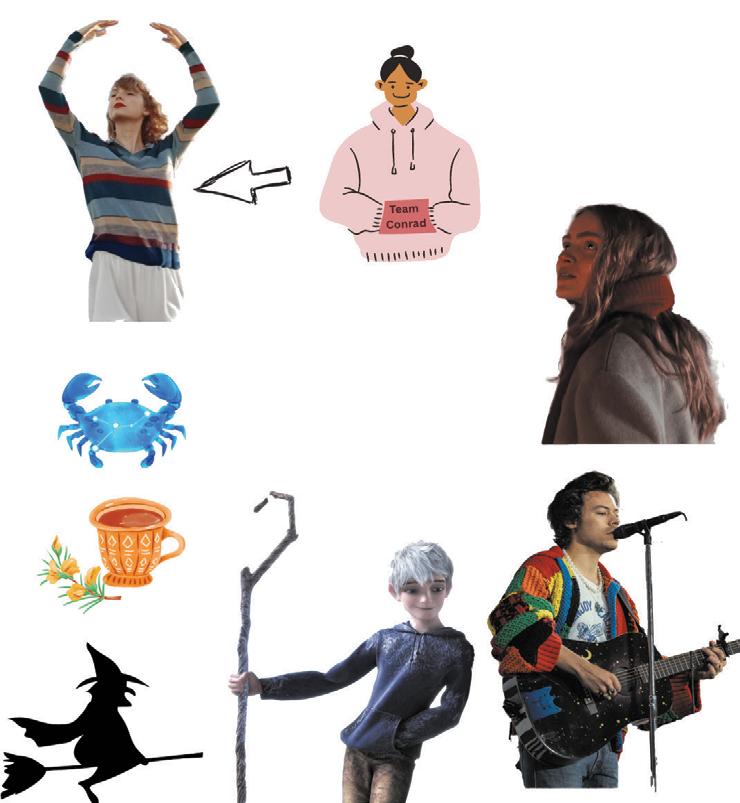



People like Superman, Falcon and Invincible Activity involving two needles, stereotypically
Ballet about a girl who Signature red South
12. Movie featuring a misunderstood green witch

Down
1. Blue alien who befriends Lilo
2. Something tiny that is apparently unique and forms when really cold
3. Zodiac sign for 22 June to 22 July
14. Woolly elephants featured usually make you roll your

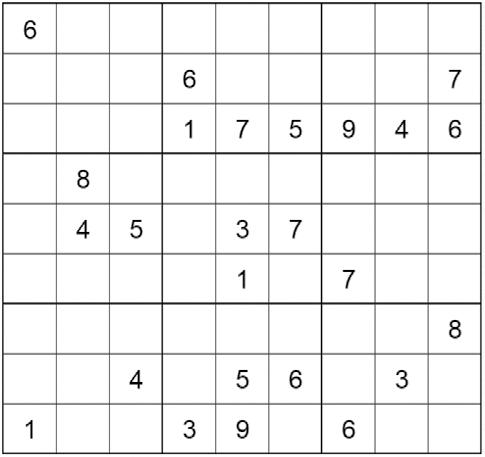

Riddle:
The more you take, the more you leave
5. Solve the anagram for this pre-historic movie: SWIRL US DOC JAR
6. Popular online word game created by The New York Times
8. Earth’s highest mountain
9. Language-learning app with a scary green owl
10. Animal known for its slyness

13. Coffee that is mostly milk with just a shot of espresso 14. Item worn to cover one’s face


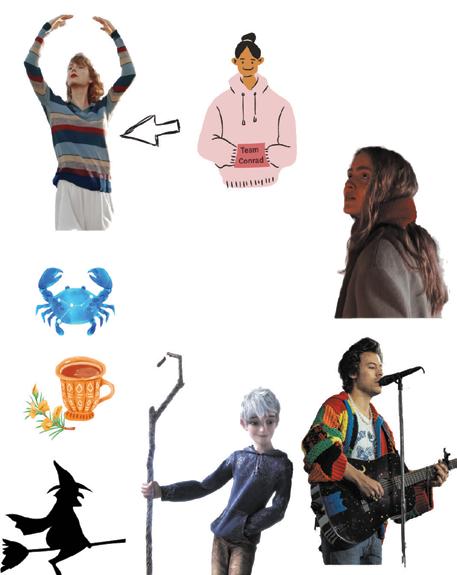


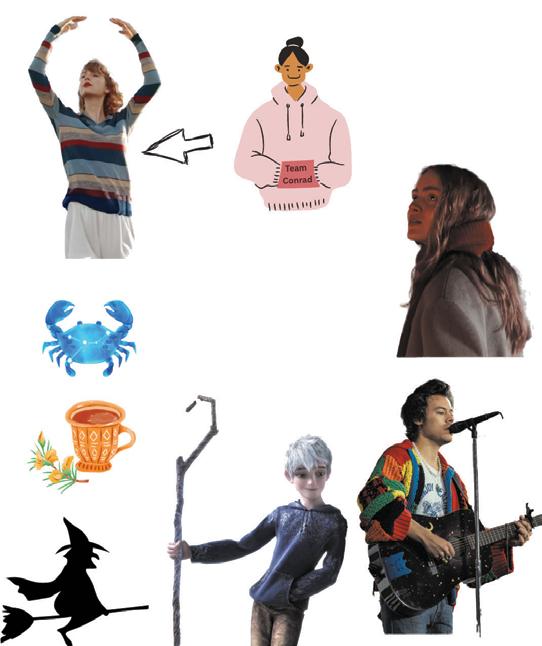
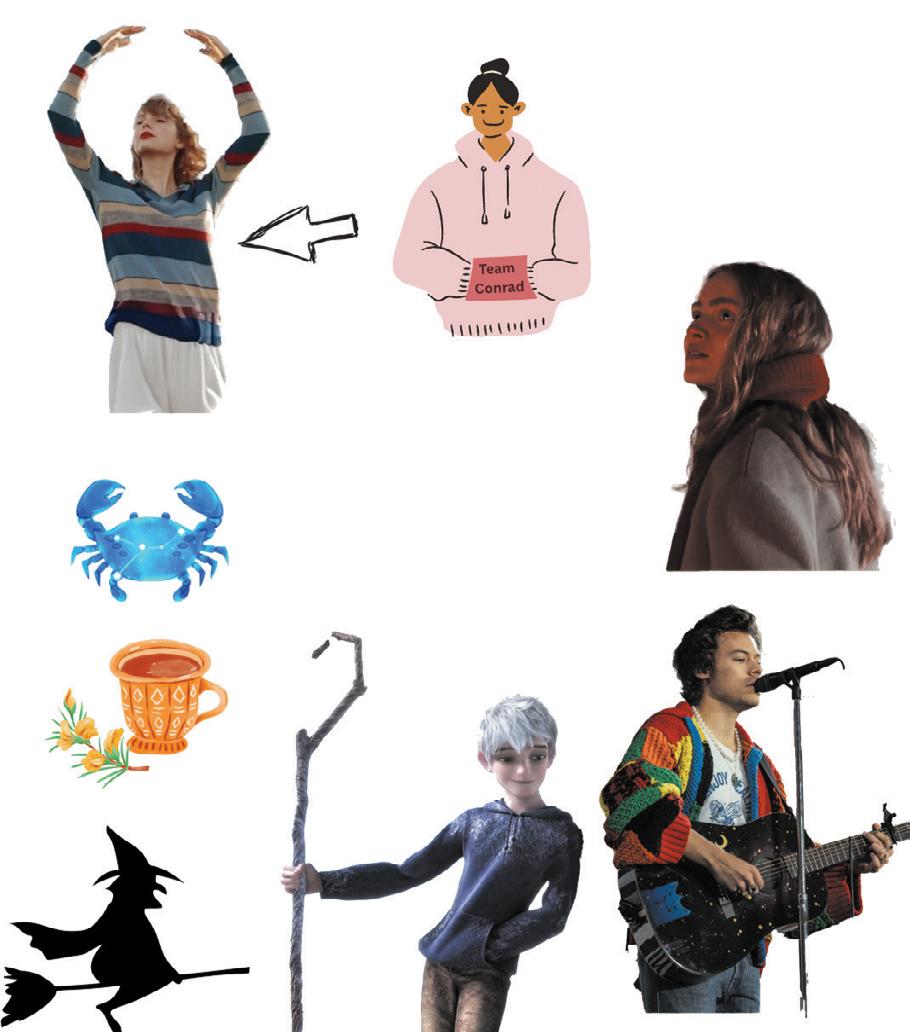



Mashapa Ramokofi
When people speak about university, they often do so in one of two extremes. It is either glorified as the ultimate coming-of-age adventure – a time of unforgettable friendships, academic triumphs, and personal growth. Or it’s painted as a soul-sapping, overpriced hustle factory where your biggest lesson is learning how to function on three hours of sleep and two-minute noodles. But where does the truth really lie?
Is university really as transformative as people say? Or is the entire experience just one big, expensive social experiment we all signed up for because we thought we had no other choice?
Let’s unpack the myth, the mess, and the meaning of the university experience.
Expectation vs reality
Before you even step onto campus, the university fantasy begins. It is fed to you through high school career expos, glossy brochures, older cousins, and social media reels that show perfect aesthetics – sunlit libraries, bustling lawns, parties with fairy lights, and Red Bull-fuelled study sessions that always seem romantic instead of exhausting.
But when you get there, it hits you. University life is not that deep, inspiring montage. It’s late registration queues, technical glitches on ClickUP, missing the bus, and getting to class drenched in rainwater. It’s group assignments with strangers who ghost you the minute things get tough. Zinhle, a third-year BA student, put it this way: “I came here expecting freedom and self-discovery. I found confusion, academic stress, and too many PowerPoint slides.”
Yes, you change – but not in the way you think
There is no doubt that university changes you. But it’s not always in the ways you expect. You don’t suddenly wake up one day feeling “mature” or “self-actualised”. What happens instead is quieter, more subdued. You learn how to stretch R300 to make it last a week and still squeeze in an iced coffee. You learn how to survive rejection – academic, romantic, and personal – and still show up the next day. You
learn how to speak up in a room full of strangers, and when to walk away from people who drain you.
University tests your capacity for growth in the most uncomfortable ways. It forces you to confront your values, challenge your beliefs, and unlearn some things you were once absolutely certain of. It throws identity, imposter syndrome, pressure, and purpose into a blender and says “good luck making sense of that”. But over time, you do.
The academic side: a mixed bag
The academic side of university is often both intellectually stimulating and emotionally draining. One week, you are writing an essay on legal philosophy that makes you feel like a worldchanger, and the next, you are begging Turnitin not to flag your work at 23% while having a panic attack about it.
The highs – acing an exam, clicking with a lecturer, writing something you are proud of – can feel life-changing. But the lows? Those are brutal. Academic burnout is real, and so is academic depression. According to a 2023 study by the University of Cape Town, over 60% of South African university students reported high levels of stress, anxiety, or burnout at some point in their studies. We don’t talk about that enough. The academic system does not always reward creativity or curiosity – it often rewards endurance.

Promise Erero
Cue the tears once again. Were you disappointed? Did he break your heart? Did the module threatening your degree win the battle? Did your whole friend group drop you? These are all painful experiences that many of us have faced at one point or another. On the bright side, you have lived long enough to know that disappointment does not last forever, and the sun will shine on you soon enough. As comforting as it is to know that “this too shall pass”, it is always beneficial to have a guide to help you navigate through these heavy feelings. Luckily for you, here are a few coping mechanisms to help you wipe away your tears and get you up on your feet again. L for laughter
We have all heard that laughter is the best medicine, and Jeanne Segal from HelpGuide confirms this statement. Laughter is not only a great way to relieve stress, but it also has great physical benefits such as boosting immunity and preventing heart disease. One way to get over difficult times is to find the humour in it. How many times have you heard the “it’s not me, it’s you” speech? And how many times have you gone to a perusal and found that you put a minus sign where there should have been a plus sign? When you think about it, these are actually laughable moments that help you realise that maybe it’s not as deep as you thought it was. R you reminiscing?
not a linear experience. There will be ups and downs. But when you’re low, don’t be afraid to remember the highs to balance you out.
D is for…
Distraction! Talk to that new girl, pick up a new hobby, join that social club, and send that DM! David Robson shares on BBC that multitasking is an efficient way to get through any problem. When your mind is occupied with a million things at once, the priority becomes getting through each task, which leaves little room for emotions. As important as it is to heal and work through your emotions, a little break from reality and a visit to the World of Delirium never hurt anyone.
C you at the club!

It is completely fine to miss them, even if they shattered you into a million pieces. Sometimes a good trip down memory lane can turn a painful experience into a learning curve. It’s all about perspective. Hindsight is 20/20, meaning that experiences are so much clearer after time has passed and emotions have settled. It’s okay to remember the good times and ask yourself why things turned out the way they did. Life is
What’s a better way to take your mind off things than a night out with your people? Do that face beat and get that trim! Looking good and dressing up can do wonders for your soul. A good old-fashioned confidence boost can remind you to live in the moment and stop stressing about the past. A good jol is great, so don’t let the morning’s regrets stop you from having the most fun you possibly could.
I’d indulge in it
Sit in it. Sit in the grief, sit in the heartbreak, and sit in the disappointment. Cry until there are no more tears because bottling up your emotions only leads to an eruption when triggered. The amount of time it takes depends on how much you’re willing to confront at once, and the more you confront, the more you work through.
From endless laughter to late-night cries, anything goes when you are going through it. No matter what you read or hear, always remember that healing is a personal journey, and tough times are the hardest to navigate when figuring out the right way to handle things. When the dust settles and the sky is blue again, you will be able to look back and tell yourself that you made it through something you never thought you could – and that’s all that matters!
The social side: friendships, loneliness, and everything inbetween
For some, university is where they meet lifelong friends, roommates-turned-siblings, or even future business partners and lovers. There is something about trauma-bonding over missed deadlines or res food that turns acquaintances into comrades.
But for many others, it is also a deeply isolating time. The pressure to “find your people” can be overwhelming, and in a place where everyone is figuring themselves out, relationships can be fleeting and shallow. Karabo, a postgraduate student, says, “I’ve made friends I’ll treasure forever, and I’ve also spent whole semesters feeling completely alone.” The actual truth? Both can be true at the same time. So... was it worth it?
It depends on what you were hoping for. If you came to university expecting answers, you might leave with more questions. But that’s not necessarily a bad thing. The real value of university often lies not in what it gives you, but in who you become while navigating it. You become more resilient. You learn how to think, not just what to think. You sharpen your voice. You pick up soft skills no course ever explicitly teaches you, like time management, self-discipline, and emotional intelligence. Sometimes, you just learn how to survive in a system that was not designed with your comfort in mind. The verdict: overrated and life-changing
Maybe the answer is this: university is both overrated and life changing. It’s expensive. It’s exhausting. It’s often elitist and doesn’t prepare you for the chaotic job market nearly as well as it should. But it’s also a portal. Not into some perfect life, but into a fuller version of yourself – one who has been tested, questioned, and stretched beyond your limits. Whether or not it’s “worth it” depends on how you define value. For some, the experience is priceless. For others, it’s just proof that we desperately need a new system. But either way, it shapes you. And that might be the most life-changing part of all.


Milan Govender
The elevator hits the bottom floor – the floor for women is what he called it. The doors groan open, as if it were a violated thing. A rancid stench strikes her nose. Her eyes sting and tear up as the reeking rolls in. The rot of expectations and barrels of toxic waste of expired masculinity line the walls. As she proceeds out, her steps weigh heavy with the burden of earning and caring and suppressing and giving and starving and supporting and nurturing. The ball and chain of the unpaid labour of a wife and mother, words swallowed in boardrooms, smiles forced out of fear. Her dampened passions are a mere echo dissipating into silence. The ceiling is transparent but nobody is looking down at her. It is designed to only look up. Above, the men float through hallways freely and gaze pretentiously at pictures of naked women on the walls. No heads. No eyes. No humanity. No agency. Just bare bodies.
To her left, a frame reads Employee of the Month: Pink Tax, for Excellence in Maintaining Female Economic Subjugation. Nearby, a trophy sits comfortably: Most Subtle Proliferator of Oppression: “Good Guys” who Smile but with Carnassial Teeth.

She passes a door marked Bodily Autonomy. It is bolted closed with the nails of policies, ideologies, and the brittle bones of the old men who easily snatched away her rights. Another door, Intellectual Credit, is locked, but she can hear voices from behind begging to be let out into the world. The key dangles from the pocket of a man upstairs. Rumours of war on women written on the walls in lipstick or blood. She could not tell which it was.
Out of the dark, perverted claws grab at her body to own it, to consume it. She wants to scream but she knows that here, screams are only background noise. Each claw burns her skin. She cries because her skin is not beautiful anymore. She mourns because that bothers her more than the pain. Why does the world need to see her as beautiful for her to feel it, and maybe why does she need to feel it in the first place? Why does she blame herself? A torturous inner monologue entrenched in her to cause as much persecution as the hallway. As she reaches the end of the passage, the ceiling begins to descend. There is no space for the downtrodden woman. She punches at the glass ceiling with her bare fists. Each finger receives its own unique incision. Each knuckle, its own bruise. She shrieks in pain but there are no witnesses. The glass shatters. No applause. No victorious roar.
She solemnly walks back to the elevator. She does not need to be here. This floor was assigned, inherited, and constructed. There are floors above that have open doors and that smell of freedom, of liberation, of opportunity. The doors open. She stares momentarily at the dingey, rusted contraption.
“Hard pass. I’ll take the stairs at my own pace and with my own rules. I will make it to the top.”
“Is it a bird? Is it a plane? No, it’s
Melissa Aitchison
ver the years, Superman has become one of the most iconic, easily recognised figures in modern pop culture. Since his first appearance in issue one of Action Comics in 1938, Superman has been a roaring success. The first self-titled comic book was released a year later in 1939, and the Superman craze has not slowed down since. Superman’s success is the catalyst for many of our beloved superhero stories. There would be no Batman, Iron Man, or even SpiderMan without Superman. So, what makes the Man of Steel so iconic that he has stayed relevant for over 87 years?
Since his creation, Superman has always been able to adapt to the changing times. During World War II, his slogan changed from “Fighting for truth and justice” to include American patriotism, making it “Fighting for truth, justice, and the American way”. He became a symbol of the perfect American hero where right and wrong were always clear.
is an alien from a destroyed planet, but he was raised as Clark Kent in Kansas. Clark Kent is Superman, and this fact attaches him to his humanity. Superman (1978) ends with Lois Lane dying and Superman
stays the same. Superman is not just some unique being flying high above us, but rather, in showing the hero’s desires, fears, and dreams, Superman is all of us.

Later on in the 70s, the first Superman feature film was released, and Christopher Reeves gave the superhero a more human side. Yes, Superman
Chase Meyer
WClark is here for a greater purpose. Saving Lois
confirmation that Superman may be from another

become the man that both fathers would want him to be. This leads to him having to find acceptance and come to terms with who he is. Man of Steel is violent and gritty, but also shows a relatable side of Superman dealing with the very human issues of love, loyalty, and family, even if he is not human himself. The Superman we see in Man of Steel is not the colourful, underwear-clad hero we knew before. However, the more he changes, the more Superman
The 2025 remake brings back the traditional looking Superman, with filmmaker James Gunn wanting the film to focus on Superman's inherent optimism and desire to help others, presenting him as a symbol of hope rather than a dark, brooding figure. Unlike Man of Steel, this Superman seems to care what the public thinks of him. More specifically, he wants the world to understand that he is not a danger to anyone and believes in doing good. This film, like all those before it, holds a mirror to our current society. Superman stopping a war in a foreign country was seen as an illegal entry and not as an act of heroism. The film also reopens the conversation of how Superman determines who he saves and who he does not, which was a major plot point in Man of Steel. However, Gunn explores this question in a way that makes Superman truly think about his impact on the world. This kind of moral complexity is what makes great Superman stories last. With the release of the 2025 Superman, there have been eleven feature films, two serials, and seven TV shows based on and around Superman. This superhero has stood the test of time. The 1978 film showed audiences and investors that comic book films could, in fact, be profitable, leading to the genre growing into what it has become today. In the same way that Man of Steel set off the DC extended universe in response to Marvel’s MCU, what will this new Superman lead to?
ith the release of their latest hit KPop Demon Hunters, Sony Pictures Animation (SPA) continues to redefine the artistry of animation. Through their daring visuals and imaginative storytelling, SPA shatters the animation rulebook and shapes its own reality. SPA empowers filmmakers to pioneer the neverbefore-seen, and in doing so, they have forged the future of animation with the likes of the highly acclaimed Spider-Man: Into the Spider-Verse (2018). But behind these glimmering lights, many of the artists at Sony grapple with gruelling work hours and an excessive workload. SPA’s triumphs are undeniable, but so are its contradictions: a studio that empowers filmmakers and avant-garde concepts while reportedly grinding artists into exhaustion.
Growing Pains
From The Emoji Movie (2017) to The Mitchells Vs. The Machines (2021), SPA has had a rocky journey in becoming what it is today. The studio has produced some of the best and worst animation films, and to understand why, we need to delve into the history of SPA.
SPA was founded in 2002. Their first release was Open Season (2006), followed by the Academy Award-nominated film Surf’s Up (2007). Despite earning a large profit in theatres, Open Season was an average animated kids film with a score of 48% on Rotten Tomatoes. In contrast, Surf’s Up did well in box office and scored high on Rotten Tomatoes (79%) because of how well it tackled serious subjects, like existentialism, in a comedic tone, while also standing out among many other penguin movies at the time.
Later on, Cloudy with a Chance of Meatballs (2009), directed by Phil Lord and Chris Miller, was released. This film was vastly different from what was being produced at the time because while most animation films were embracing realism, Lord and Miller wanted to, according to TheWrap, create a film that was “muppet-y and cartoony”. The success of Cloudy with a Chance of Meatballs (2009) led to the creation of a sequel and further cemented SPA as fearless.
With that being said, the inconsistency of Sony animated films cannot be overstated. This trait can be seen as the result of a studio with big ambitions but no definitive creative DNA. Interestingly, SPA made their inconsistency work for them because while their films felt random and arbitrary, they also felt unique and exciting.
Finding their Sea Legs
With KPop Demon Hunters dominating Netflix’s global charts and the Spider-Verse franchise redefining cinematic artistry, SPA has risen in the ranks as animation's most intrepid innovator. A studio with no house style: the wildcard to beat in the animation industry.
Spider-Man: Into the Spider-Verse (2018) was the catalyst for the reinvention of SPA as it received unparalleled praise for its mesmerising, groundbreaking visual style and its go-for-broke narration. It is a widely labelled “modern masterpiece” amid an ocean of same-old, same-old.
Because of their non-conforming nature, SPA is able to dabble in different art forms such as 2D and 3D graphics. When it comes to bringing 2D media to life through 3D animation, SPA has become the studio others can learn from. Similar to how the Spider-Verse films use inventive visual tricks to make it feel like you have walked into a comic book (such as the replication of comic book features, colour bleeds, and its unique frame rate), KPop Demon Hunters introduces its own visual style. It incorporates stylised emoji expressions and anime-coded sequences while showcasing a distinct Korean-inspired flair.
Another advantage of SPA’s non-conformity to a single style is its determination to experiment in different art styles despite the possibility of lower earnings. Sony continues to experiment with worldbuilding in Spider-Man: Across the Spider-Verse
use of 2D and 3D in the film. In the sequel, each universe looks and feels like it is drawn by a different artist, from the vibrant hustle and bustle of Pavitr Prabhakar’s “Mumbattan” to the impressionist watercolours of Gwen Stacy’s Earth-65. By channeling directorial vision over formula, SPA has become a hub for artistic fearlessness in an industry that is too often starved of risk.
But At What Cost?
In the dim glow of an animation studio, an artist reworks a single frame from Spider-Man: Across the Spider-Verse (2023) for the tenth time, not because of a technical flaw, but because producer Phil Lord demanded another tweak to an already-approved animated sequence. According to articles in Vulture and MovieWeb, any crew members who worked on the sequel described the experience as “uniquely arduous” and an experience that compelled approximately 100 artists to flee before the film’s completion.
It’s standard procedure to iron out any major changes in the development and storyboard stages, but Sony dove headfirst into production while many of its key ideas were still developing. Despite this, Phil Lord, one of the key contributors to the SpiderVerse franchise, has a particular management style where he frequently makes major changes to fully rendered work that is already approved. It amplifies the workload for many artists and crew members as it creates a backlog of work across multiple departments. This is especially crippling when you are working in a medium where every second of footage requires hundreds of hours of labour from the worker.

According to Vulture, as a result of Lord’s crippling management style, many animators were pushed to work “more than 11 hours a day, seven days a week”. However, as voiced MovieWeb, many others chose to stay to “make sure their work survived until the end”.
Quoted in Vulture, Amy Pascal, the former Sony Pictures Entertainment Chairperson and Spider-Verse producer, says to the demoralised crew and animators, “I guess, welcome to making a movie”. This encapsulates the dual reality of Sony where boundary-shattering art and creative ambition often clash with human cost.
What makes SPA indispensable to the animation industry’s evolution may be precisely what jeopardises its sustainability. However, one truth is undeniable: Sony Pictures Animation has made animated film thrilling again.

Tflavourful balance of humour, emotion, and historical context. It is a tried-and-tested recipe, but Lisa McGee executes it humorously with sprinkles of Irish history, making every bite feel refreshing.
Ingredients
● Two teaspoons of thyme
● A generous helping of nostalgia
● Three crane shots
● One tablespoon of a voice-over
● Two cloves of dry wit
● A pinch of quips
● 4 ounces of chemistry
● 3 handfuls of banter
● 4 cups of compelling characters
Directions
Step 1
First, make your context base. Add an ounce of nostalgia, a wistful soundtrack, and two teaspoons of thyme to your mixing bowl. Next, gently toss a couple of scenic crane shots of lush green Derry fields infused with cuts of scenic neighbourhoods, seamlessly blended with a dash of town signs.
Add three cups of army vehicle tracking shots, sprinklings of TV news excerpts, and a dash of sentimental schoolgirl uniforms to build your context base. Whisk it all together with a strong narrative voice. If you want to give your dish a humorous kick, make sure the voiceover narration of the main character’s diary comes from her eccentric cousin.
Step 2
Next, you need to make your filling. Start with subversive dry humour. Crack a few digs at the English and Protestants in another bowl. Throw in a bombed bridge and add a few lines from characters annoyed over how the bomb will make traffic slow for a touch of absurdity, giving your pie a tangy taste. Whisk it all together. The timing and delivery are very important for this step. If you leave it for too long, your mix will be too cakey and the humour will fall flat.
Step 3
The next step is making your characters. You can get this ready-made from the store or you can create your own. For this recipe, we will be making our own using dialogue.
Toss quips, diced inside jokes, cubes of references from past events the audience is not privy to, and pieces of some good-natured insults into a wok and fry them at a medium heat. You can take creative liberties here, but make sure to not add too much of one ingredient or else your filling is going to taste very predictable and monotonous.
Step 4
After your characters have become golden brown, take them out of the pan. Give them a few minutes to cool down, and connect them using a buttery mixture of chemistry and banter applied with a hand-held camera brush for a hint of familiarity. Results will vary. Some of your characters will taste sweet while others may be bitter when mixed together.
Step 5
Take your filling and put it into the base. A firm hand is very important for this step. You do not want to lose your voice and tone while putting your pie together. Place your pie in the oven to bake. The temperature and timing are crucial aspects to consider. Twenty minutes are good and snappy, but may not be enough for all of your ingredients to fully bake, while an hour can burn all of your ingredients to the point where your audience can no longer recognise what you were originally trying to make.
Serving Suggestions
This dish is best enjoyed in one sitting with a glass of TK red lemonade to wash it down.
Katlego Malema
“The world is so sad, dull, negative, and there’s just a lot of icky stuff in the world. I wanted to show the people through my art that there is still that spark of joy and hope inside all of us.” – Bernice Lemmer
“Kaleidoscope of Joy” is the latest art series by artist, musician, and dancer Bernice Lemmer featuring acrylics and mixed media pieces. This interview with Lemmer discusses the birth of her series, her journey as an artist, and her reflections on the use of Artificial Intelligence (AI) and the environment from an artist’s perspective.
When did your love for art begin, and what made you realise that it was something you would love to do for all of eternity?
“My grandmother was an artist and she started painting in the mid-40s, so when I was a kid I would go visit her, and I would be so in awe of everything that she created in her studio. The paintings and the smell of the oil paints [were] just so amazing. She taught me a few things as well, like how to draw. The creativity and [love of] art was there [from] a young age. My mom is very creative as well and is also an artist, and she wanted to encourage my creativity. So when I was four years old, she painted blocks on the wall and that’s when I did my first mural. In every block, I painted a little thing – at the age of four! They have always encouraged me [to do] art, [to be] creative. I dance and make music as well.”
“When I was in standard four (grade six), I had a teacher who saw my potential and really encouraged me, and that’s when I started doing more detailed drawings. That’s where I realised that I absolutely love this! This is me, this is what I want to do for the rest of my life. I’ve never looked back. It’s just been art all the way.”
What type of artwork do you specialise in?
“When I started doing art professionally in 2004/2005, I did quite a variety of things, and that helped me see what I like. I had a lot of commissions and I started to specialise more in murals, especially children’s murals. It’s quite a lot and I like it because it’s colourful and joyful, but I’m still working on finding my way and style.”
“I think in the last two years, I realised that I want to go more into abstract and expressionist kinds of works, and abstract realism where you combine the loose, abstract style with the realistic way of painting, which I also like and I’ve also done. I’ve heard someone say it’s like you start loose and free and then you work towards refinement. So for the last two years, that’s been more my style. But, I am still exploring, it’s varying. It’s a journey, so I’m not there yet. I like mixed media because there’s so many nice mediums to use, like inks, collage, pastels, and charcoal. I love it. It makes an artwork more interesting and [rich]. My artistic
style is still evolving and that’s the exciting part. That’s the beauty of creativity; it grows and expands all the time.”
“Kaleidoscope of Joy” features a series of artworks boasting vibrant colours. Could you tell us more about the choice of the phrase “Kaleidoscope of Joy”? What exactly inspired the birth of this exhibition?
“There are two things that got me to that name and the birth of that series. I committed to [making] 70 paintings of flowers, and every one I dedicated to someone who has left something beautiful in my life. Their influence in my life, the memories I have of that person, and I wanted to paint that and tell that story. This is what that person meant for me, to say I’m grateful for the imprint that they left in my heart, and it brings me so much joy. But, that is a more personal reason.”
“On a broader scale, the world is so sad, dull, negative, and there’s just a lot of icky stuff in the world. I wanted to show people, through my art, that there is still that spark of joy and hope inside all of us. If you [go] into a room with the “Kaleidoscope of Joy”, there would be a spark, to see the light and see the joy again. That’s within all of us and I wanted to spark that in everybody through the exhibition.”
Can you tell us about any specific piece in the series that speaks to you? And why that particular piece?
“All of them are my babies, but this one with the roses, this very modern and expressive kind [of] one; that was my breakthrough painting titled “Roses so free”. I put on some music for that one and I just listened to the music. I didn’t think, I just went with the flow of the music. I had my paints and everything with me, and it just happened. And then, after a few hours, I stood back, and I was like “Wow! I love this!” It serves as a testament to the power of exploration and spontaneity in artistic growth.”
In one of your artworks, “Mwana Mwali”, you used a couple of gloves and masks that give a textured look to the painting. What is the significance behind that, particularly in this painting? Also, what is the importance of incorporating recycled materials in art in general?
“That one was my 2020 painting, when lockdown happened and everybody tried to make sense of what was happening, trying to find healing in their own way because what had happened was a trauma, and I’ve always used my art to help one heal through things. So when I painted that, it was shocking that everybody was using so many gloves and masks the whole time and they were everywhere in the streets, seas, and rivers. And then, I wanted to show that this is a part of our story, but it’s [going to] eventually be in the past. I wanted to show [Mwana Mwali] that she’s the foreground, she’s the future; we are the future generation. We’re still [going to] remember that story with the masks, it’s still part of our story; some people still do wear
masks, and we’re all writing that story together. And, with that, it must remind us that we are the ones that need to change, to make changes for our environment, the world, and make better choices. Although that’s still a part of our story and universal trauma, we did overcome it and we are resilient, so that was what I wanted to communicate through that painting.”
“I think it’s quite important to recycle not only in art, but we should try to recycle in all kinds of ways. I like to thrift because it’s also a way of recycling. We should see in all kinds of ways how we can incorporate recycling into our lives so that we can be part of the solution stopping this mass production, fast fashion, and all of [this] that feeds the “machine”. Where is all the stuff [going to] go eventually if we keep on producing it?”
“Art materials can be so expensive as well, and not everyone can afford all that really expensive material. A lot of people want to be creative, so I think it’s such a creative way to think out of the box of how you can really play and use the materials that are already here and available. You can just make new things out of the old things.”
How does the existence of AI affect you and your work?
“It just came up so quickly and we can’t avoid it anymore. Personally, it doesn’t affect me that much yet. I think my kind of style, especially now [becoming] expressionist, and so my brush strokes capture an energy that AI can’t regenerate. The expressionist, freestyle kind of art is more about emotion. AI can produce a pretty image, but it can’t capture that emotion of the creative. I like to build personal relationships with people and that’s what people want. I want that human connection. If I keep on doing that and focus on that, AI can be there and do its thing, but I’ve got that connection with people. They love my art and they want my art. It’s not about just a pretty picture; it’s more about that energetic exchange and human connection with people. But AI is here and it can be threatening, but at the end, people are [going to] realise they still want human connection. That’s what we’re here for, we are meant to connect.”
According to you, what would you say are the pros and cons of AI?
“I’ve used AI before if I’m writing something and I need to check grammar ,and also for when I’m doing marketing. If I have a question about something, I do use AI to help me with it. I use it as an assistant almost; I’m not letting it use me. We must become the master and not the slave of AI.”
“It can really be used wisely as a tool you need in a moment for grammar. For example, it shouldn’t write the article, it should help here and there with things like spelling, or a certain kind of feel you want to bring in the article or an advertisement. It shouldn’t do the work for you; it should be an assistant to help finish where you need to finish off. And sometimes with art, if you need to find references. I like to use collages sometimes and it’s nice to generate an image of, say a dragonfly, to cut out and use it in your piece of artwork that you have created. If you use it like that for the little things,

like colour combinations as well, AI can help one a little bit with choosing the right colours to figure out colour combinations that work.”
“In a nutshell, the pros would be AI acting as a tool that can assist you but not letting it take over. The cons would be when one lets it take over and it does all the work that one takes credit for. I’ve seen people create music with AI and say it’s them, but it’s not them. That’s unethical. It’s also a tricky kind of thing. We’re still figuring [out] “What happened now? AI is here!”, and we have to make sense for ourselves.”
Although you create different artworks through different mediums, would you say there is a main idea that connects everything that you create?
Something that is a message you hope to get across to the audience no matter which piece(s) of yours it is that they are drawn to?
“What I want people to know is that art and creativity in all forms can elevate humankind. I want people to see in my art that there is potential and that potential is in everybody –there’s something beautiful in everybody. With my art, I want people to remember that, I want them to feel it when they stand in front of the artwork. I want them to feel the energy of the art and then they feel elevated. If they were maybe down, they would feel joy all of a sudden or they would have a smile on their face; they would experience beauty in a new way. I would love people to experience that through my art, to be elevated, and that wherever they are, the art would still elevate them. They will go out into the world and remember their potential. We all have a little something to give to the world. We can leave an imprint on people whatever our talents and gifts are on this planet. If people can tune into that, there will be so much change in the world; there is so much potential.”
If you have been wondering how art, AI and the environment relate to one another, that should lift the veil.
If you have gone to see a show at one of South Africa’s main theatres in the past decade, you have probably noticed that the same shows always seem to come back around, again and again and again. The variety of South African theatre seems to be caught in a labyrinth. While Annie, Joseph, and Chicago are beautiful productions, it does not leave much room in the calendar for other shows. It turns audiences into creatures of habit by seeing the same shows over and over again.
every four or five years.
However, there actually is a newer audience wanting to go to the theatre.
Spring Awakening is a racy rock musical featuring heavy themes of sex education and suicide. It has a PG13 rating and became incredibly popular with young adult audiences. It ran successfully for just under two months in Cape Town and Joburg, and then dominated this year’s Naledi Awards.

the usual audiences are used to. It did, however, turn out to be a profitable run, which raises the question – if there were a bigger variety of shows, would it make the theatre industry more profitable in the long run?
the world tour, featuring very few South Africans in the cast and crew. South Africa is a rich, diverse place with incredible talent, so we need to allow our performers to showcase their talents in different ways.

The South African theatre industry is set up in a way that only allows productions to be open for four weeks in Cape Town before moving to Johannesburg for another four weeks, or vice versa. So, theatres need to produce shows that are guaranteed moneymakers. This means wellknown shows often get picked up over smaller ones. The need for profitable shows also means they cater to the existing audience rather than trying to bring in a new one. Theatres survive on people going to see The Sound of Music for the third time or the middle-aged women who sell out Jonathan Roxmouth’s one man show that he does
Dear Evan Hansen was another musical on stage this year that was geared towards a younger adult audience. However, instead of the four weeks initially advertised, the final week of shows seemingly disappeared a full month before shows even began in Joburg. This was most probably because of low projected ticket sales as it was not the usual, family friendly, well-known show that
As an artform, theatre is becoming an increasingly expensive entertainment option. Filling a theatre is not as easy as it was fifteen years ago, so it makes sense for production companies to only want to put on shows that are almost guaranteed to be a smash hit. However, if all that ever comes to our theatres are the same ten shows on rotation, it excludes those who enjoy the theatre but maybe not those specific shows. This is not to say there is no variety; it is just few and far between. And these shows are not always South African productions. When Evita came to South Africa in 2017, it was part of
Showing the classics is important. Everyone should see Joseph and the Amazing Technicolor Dreamcoat at least once, but the classics should not stop more relevant plays and musicals from being produced. Younger audiences are clearly willing to go to the theatre, but they do not have the same tastes as their parents or grandparents. They want to see modern ideas and stories that better relate to their own lives and experiences. And these shows do exist! Musicals such as Hadestown, Wicked, and Six are all based on old myths and stories that have been reconstructed to reach a new, younger audience and have become internationally acclaimed.
True growth in South African theatre will come when it dares to diversify and welcome new voices, fresh stories, and the audiences waiting to hear them. Theatres need to ask themselves a very important question: is it worth it to gamble on a younger audience?
Cara Heymans
“Where’s RepTV?” “When is Taylor Swift releasing her version of Reputation?” All Taylor Swift fans (and the general public) have been able to talk about for the last four years is a rerecording of an album from 2017. Not a new album, but one we’ve already heard. Why? What does “Taylor’s Version” even mean? Who is Scooter Braun? What’s the big deal with masters? How has Taylor Swift been able to redefine the relationship between an artist and their label in the age of streaming, and why do or should we care?
To understand the depth and complexity of a saga 20 years in the making, we have to journey back to Nashville, Tennessee, 2005. A man named Scott Borchetta has just started his own record label after leaving Dreamworks and is eager to sign some fresh young faces. Enter Taylor Swift. She signs a six-album record deal with the newlyestablished Big Machine Records. This particular deal also included a clause stating that the label would own the masters to its artist’s music while she would maintain publishing rights. This means that the label would own the original records and distribute them as they saw fit, and Swift owned the music itself and could choose to re-record songs as she saw fit thanks to her involvement in the songwriting process. This will become important later.
Why is this such a big deal? Well, owning masters to music means that you receive a cut of all profits the music makes. It also means that you possess its distribution rights – you get to decide when, where, and how songs are used. An artist who does not own their masters still receives royalties but has limited control over their work itself. They do not have a say in future protections of, for example, the sale of their masters.
In 2018, after fulfilling her end of the six-album contract, Taylor Swift announced her departure from the label, signing instead with Republic Records. This new deal allowed her to maintain possession of her masters, meaning that she had the exclusive rights to all music and music-related content produced going forward with the label. In the meantime, Big Machine Records still owned her first six albums, as well as two live albums and countless photographs, music videos, and various promotional materials. The first thirteen years of her career were still essentially under Big Machine’s control. Swift tried to negotiate ownership rights with the label, but they wanted her to release a further six albums to unlock the masters to her first six in a one-for-one trade-off. Instead of renewing her deal with the label to do just this, she chose to leave her past behind.
Then, in 2019, the worst case scenario happened: Big Machine Records was bought out by Ithaca Holdings, a company founded by Scooter Braun. This sale included the transfer of the ownership of Swift’s masters. This infuriated the artist who claimed on social media that she had attempted to buy back her masters for years, but short of trapping her in another six-album cycle (a cycle that she still would not have technically fulfilled to this day, as Swift has only released five new albums since changing labels), she was blocked For someone else to buy them out so easily was maddening in of itself, but for the person doing so to be Scooter Braun, was another thing entirely.
management, overseeing artists such as Justin Bieber, Ariana Grande, Demi Lovato, and Kanye West. Yes, the same Kanye West
who interrupted Taylor Swift during the 2009 MTV Video Music Awards and declared his disapproval at her winning “Best Female Video” on stage. Yes, the same Kanye West who depicted a naked form of Swift in his 2016 music video for his song “Famous”. Yes, the same Kanye West who conspired with Kim Kardashian, his then-wife, to illegally record a phone call between Swift and West where she is misrepresented to make it look like she consented to the aforementioned music video. Taylor Swift cites Braun’s involvement in the latter two incidents, describing him as an “incessant, manipulative bully”. For the man who had such a strong influence in the mass hatred towards Swift in 2016 that drove her into hiding and inspired the anger behind her sixth studio album, reputation, to now own and profit off of her life’s work was the ultimate betrayal. While she was expected to jump through hoops and bleed for work that was rightfully hers, Braun could acquire it with no more than a handshake. Braun wasted no time in exercising his power, blocking Swift from performing a medley of her music at the 2019 American Music Awards where she was to be honoured as Artist of the Decade. Both Braun and Borchetta claimed that by doing so, she would be rerecording her music before she was contractually allowed to do so. This just so happened to occur not long after Swift publicly declared her intent to exercise her rights as songwriter and re-record her first six albums. To perform at an awards show, the pair decided, violated

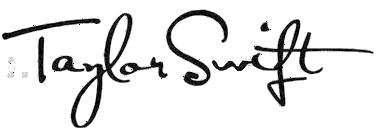
due to the global pandemic. When thinking about how she could tour four albums, the idea came to her – she could tour based on all of the albums she had produced over the past seventeen years. This tour, one that spanned two years and included the announcement of two more re-recordings and an eleventh studio album, quickly became the highest-grossing tour in history. It shattered records, boosted the economies of multiple cities across the world, and garnered support for Swift’s re-recording venture. The tour generated hype around the re-recordings, which in turn devalued the original masters. Who would want to listen to a stolen album from 2014 when people could re-experience the excitement of its release in 2023 along with additional, previously unheard vault tracks?
The year is now 2025. The world’s biggest tour is over, and everyone is waiting for their phones to buzz with the notification: a snake emoji. Instead, we got a link to a letter. After so many years, so many fights, and so much drama, Shamrock Holdings had been able to offer Swift a fair deal that involved her owning her original masters and related works. And most importantly, Scooter Braun and Scott Borchetta were nowhere near the agreement. Naturally, she said yes. Some may argue that Swift re-recording her life’s work was a waste of time or that purchasing the masters after so long was a waste of money. But sometimes, it’s about the bigger picture. By re-recording her albums, Swift was able to depreciate the value of the stolen versions to the point where they would hold less value than they were purchased for and could subsequently be sold for less than they are worth. She was able to negotiate a fairer contract that appropriately valued her life’s work without being extortionary. Swift has also always been clear that owning her masters has always been the goal. In the letter that she released on May 30th, she said , the album that started it all, could not be improved upon and releasing her own version would simply be
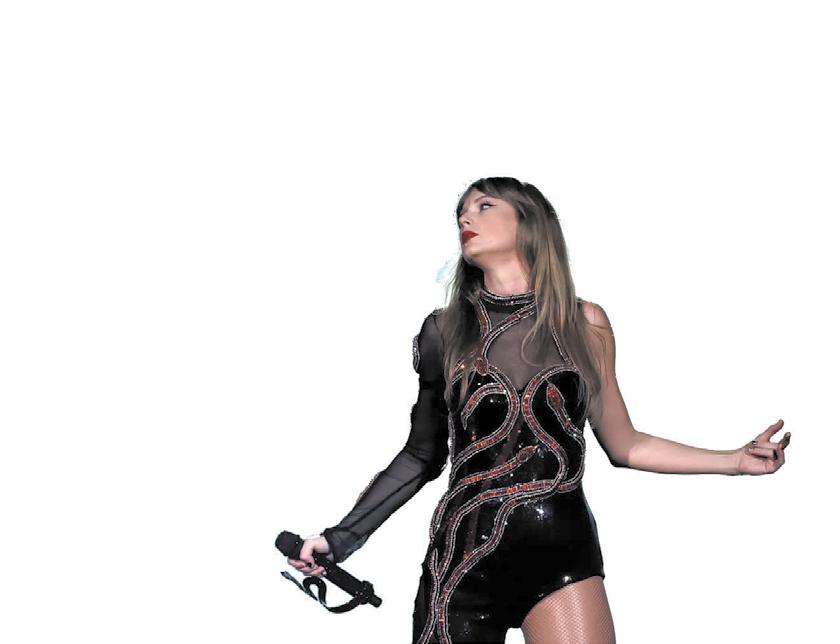
Sagittarius (Nov 22 – Dec 21) - Taylor Swift
We know you’re a Mastermind, and sometimes it works out in all of our favours. But sometimes, you need to remember The Last Time and ask the Question…? “What happened?”
Capricorn (Dec 22 – Jan 20) - Dolly Parton and Noah Kahan
You’re Gonna Go Far in your 9 to 5 and see Everywhere, Everything. But don’t lose sight of what’s happening around you, or you might just end up singing Jolene.
Aquarius (Jan 21 – Feb 19) - Chappell Roan
You’ve got all the moxie you need to start your own Femininomenon. You’re so HOT TO GO, and we’re here for it.
Pisces (Feb 20 – Mar 20) - Kesha and Olivia Rodrigo
Live every day like you’re going to Die Young, but remember that it’s good 4 u to live life, breathe air, and know that somehow, you’re going to get there.
Aries (Mar 21 – Apr 20) - Lady Gaga and Elton John
Even though you’ve been through a Bad Romance, You’re Still Standing and totally rocking your pizazz. Keep strutting your stuff and walk that fashion, baby.
Most importantly, this dispute has opened the door to conversations around artists owning their work. More musicians are pushing to own their masters, taking back power from their record labels who are no longer the important figureheads they used to be. In the age of streaming, funding from a label is less crucial to push one’s work, so why should an artist give them any more power than absolutely necessary? Intellectual property belongs with the person who created the idea, not the people who funded it,
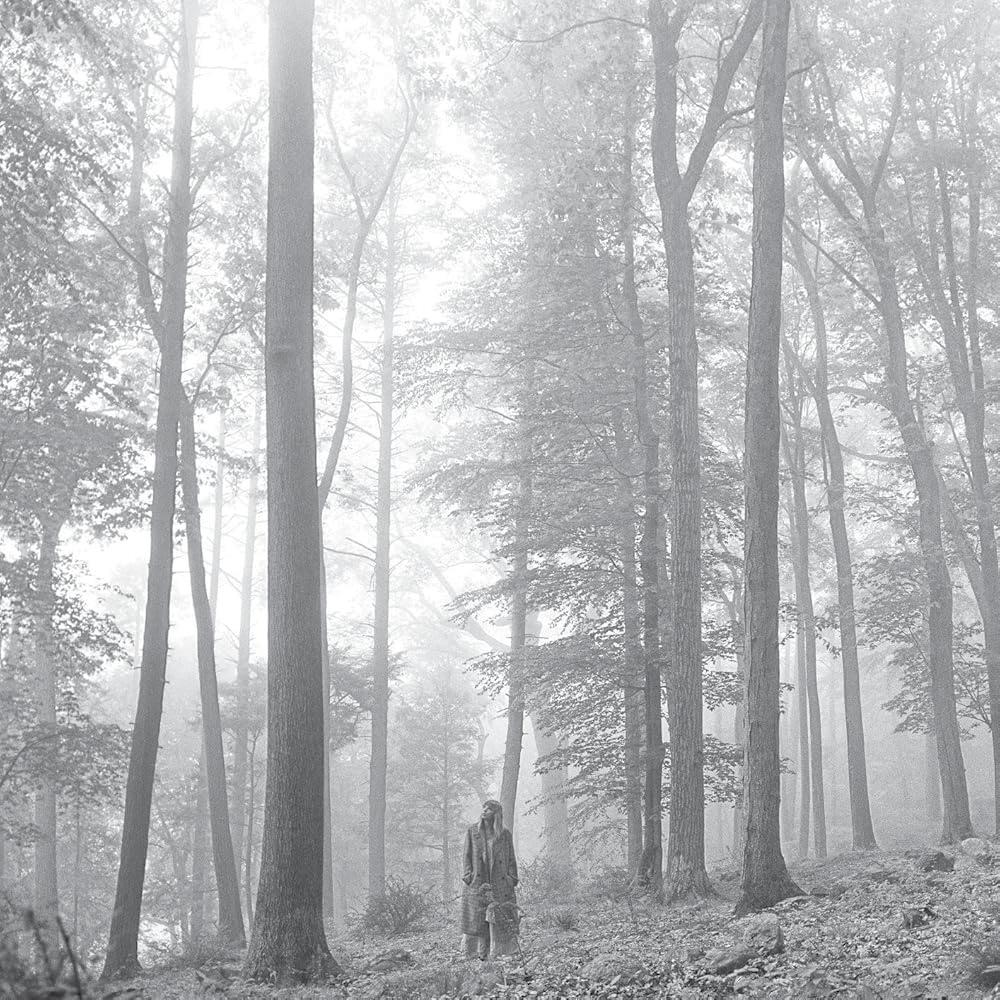
been able to re-record her albums to fundraise for buying
Taurus (Apr 21 – May 21) - Sabrina Carpenter and Adele
Rumour Has It that you’re Chasing Pavements you shouldn’t be. Please Please Please stick to having only 15 Minutes free for those around you.
Gemini (May 22 – Jun 21) - Stevie Nicks
You can try and Go Your Own Way, but sometimes, following your Dreams can lead to a Landslide, so be careful.
Cancer (Jun 22 – Jul 22) - Lana Del Rey
Don’t be a Sad Girl. Just keep drinking your Diet Mountain Dew and chase away that Summertime Sadness. Spring is almost here.
Leo (Jul 23 – Aug 22) - Whitney Houston
It’s Not Right But It’s Okay to skip a lecture every once in a while. Just don’t make it a consistent thing. You might just need that one 07:30 lecture in your exam.
Virgo (Aug 23 – Sep 22) - Gracie Abrams
Sometimes, all it takes is an I Love You, I’m Sorry out of The blue to fix things. Keep your loved ones Close to You and everything will be okay.
Libra (Sep 23 – Oct 22) - Bruno Mars
We know that you want to be in your Lazy Song vibes all day long, and we love you Just the Way You Are. But if you want that 24K Magic, then you need to start working for it.
Scorpio (Oct 23 – Nov 21) - Katy Perry
You’re living your best Teenage Dream and lighting up our lives like a Firework. Here’s a shoutout to you for loving the world Unconditionally.
Emmanuel Radingwana
Season five of the Basketball Africa League (BAL) playoffs kicked off on 6 June, and this year's playoffs were unforgettable. Although the South African basketball team Made by Ball Blue Soldiers, also known as MBB, did not qualify for the playoff rounds, South Africans turned out in large numbers to support the competing teams.
The opening match saw Cape Verde’s Kriol Star compete against Morocco’s Fath Union Sport Rabat. The game entertained fans at the SunBet Arena, ending with a score of 91-81 in favour of Kriol Star. Other teams that participated in the playoffs included Al Ahli Tripoli from Libya, Al Ittihad from Egypt, Armée Patriotique Rwandaise Basketball Club, also known as APR, from Rwanda, Petro de Luanda from Angola, U.S. Monastir from Tunisia, and Rivers Hoopers from Nigeria.
The opening day of the playoffs was action-packed, attracting fans from across South Africa, Africa, and beyond. The fan park created an exciting atmosphere before the games, featuring various activities and music from top DJs. The half-time performance featured South African hip-hop artist Cassper Nyovest who got fans dancing while the players took a break.
Day two continued the excitement with South African A-list artists performing during half-time of games one and two. The first game featured Petro de Luanda against APR, and Robot Boy and Phantom Steeze energised the crowd during half-time. Blxckie delivered an electrifying performance during half-time of the final game between U.S. Monastir and Rivers Hoopers.
de Luanda who turned around their earlier struggles to secure their spots in the semi-finals.
With the teams set for the semi-finals on 10 June, BAL and the International Basketball Federation (FIBA) organised a women’s basketball workshop aimed at developing women’s basketball. The workshop provided gear to teams in the Gauteng area and set up games for women’s teams in Soweto, featuring NBA, FIBA, and WNBA stars. The goal was to encourage young girls to pursue their dreams of playing at the highest levels of their sport.
Before the semi-finals on 11 June, BAL hosted a media training workshop led by esteemed journalist Robert Marawa who shared insights on succeeding in sports media. After the workshops, the semi-finals began. Al Ahli Tripoli was the first team to secure a spot in the finals after defeating APR whose dedicated fanbase travelled from Rwanda to support them. The second semi-final ended in favour of Petro de Luanda, which featured South African basketball star Samkelo Cele, who had played for the Cape Town Tigers the previous year.
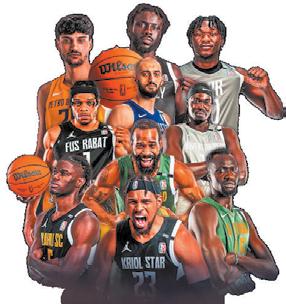
On 8 June, the quarter-finals officially began with Al Ahli Tripoli securing their spot in the semi-finals after defeating Kriol Stars. Al Ahli Tripoli became the first team to score over 100 points in the playoffs. The second quarter-final match also delivered excitement as Al Ittihad fought hard to defeat Morocco's Fath Union Sport Rabat with a score of 86-83. During this match’s half-time show, South African duo Zee Nxumalo and TBO impressed the crowd with their performance.
Day two of the quarter-finals showcased the underdog teams from the warm-up games, demonstrating that anything is possible Traditional pantsula dancers transitioned to backup dancers for local star Ch’cco, who performed his hit song “Nkao Tempela.” This mirrored the impressive performances of APR and Petro
On Friday 13 June, the competition moved closer to its conclusion with the third-place playoffs. The arena and fan park was filled with supporters of all ages, united in their love for basketball. APR managed to clinch third place against Al Ittihad, winning 123-90 and setting a new high score for the BAL, with Alex Olenga Mpoyo achieving the highest individual score in a playoff round.
On 14 June, the SunBet Arena was packed as Al Ahli Tripoli triumphed over fan favourites Petro de Luanda, winning 88-67. This victory saw Al Ahli Tripoli crowned as the season champions, earning them the prestigious BAL trophy and championship rings. This marked a memorable conclusion to the tournament.
The fifth season of the BAL was not only a highlight for basketball lovers and fans, but also for everyone who had the opportunity to witness the sport live for the first time. They experienced the excitement that they often see on social media regarding NBA games and other basketball events worldwide. The BAL created unforgettable moments for both young and old while also providing a platform for aspiring basketball players to realise that it is possible to compete in the big leagues in front of thousands of fans. Moreover, it equipped them with valuable knowledge and resources to help them achieve their goals.
After failing on multiple occasions to be crowned International Cricket Council (ICC) Champions, the Proteas finally succeeded in etching their names among the greats at Lord's.
The South African cricket team has always been regarded as one of the best men's teams in the world. However, there has been one significant hurdle: the national team had never managed to win a major tournament. Although the South African national cricket team have competed in multiple ICC tournaments and reached the playoffs and even the finals, they could never seem to secure victory. In every playoff or final they participated in, regardless of how strong their performance was, there always seemed to be something in their way. Notable disappointments include the 1992 World Cup, which was marred by rain, the tragic run-out collapse in 1999, and the narrow loss in 2015. These instances earned them the infamous nickname "Chokers", because they consistently fell short in crucial moments.
Entering the ICC Tournament, the Proteas faced one of the toughest journeys that many doubted they could conquer. They contended with injuries and external criticism questioning whether the players selected for the squad were deserving. Despite these challenges, the Proteas pressed on and managed to reach the final of the ICC World Test Championship. Their championship journey began shakily, with only two wins from six test matches, but they turned things around with six straight victories. They secured their spot in the finals by defeating Pakistan 2-0, ending with an overall record of twelve matches, eight wins, three losses, and one draw. Under the leadership of Temba Bavuma, the Proteas were set to face the Australian team at Lord’s Cricket Ground in a final that would shatter their
chokers’ curse.
Bavuma faced countless critics questioning his fitness and form to lead the team, but when the moment arrived, he answered those doubts with his performance.
It was not just Bavuma who viewed the World Test Championship as an opportunity to prove himself. Bowler Kagiso Rabada had much to prove as well. His path to the World Test Championship finals was nearly derailed by disciplinary controversy earlier in the year, which raised doubts about his spot in the squad. Nonetheless, Rabada responded with an outstanding, match-winning performance, taking five wickets on day two of the final against Australia. This effort not only turned the game in favour of the Proteas, but also solidified his legacy as one of South Africa’s greats.

Despite impressive performances by players such as Rabada, South Africa’s first innings did not meet expectations. However, in the second innings, Bavuma and the rest of the Proteas delivered an exceptional performance. They chased down Australia’s target of 282 runs to win by five wickets courtesy of Aiden Markram’s brilliant knock of 136 runs off 207 balls, which earned him the Player of the Match award. Despite injury, captain Bavuma contributed significantly with 66 runs, forming a crucial partnership of 147 runs with Markram. The ICC World Test Championship win over Australia was not just a moment where the Proteas shed their “chokers” label and became world champions, nor was it solely about Temba Bavuma being the first Proteas captain to lift the title and silence the critics. It served as a beacon of hope for cricket in South Africa and across the globe, illustrating that no matter how much doubt surrounds you, your wildest dreams are achievable as long as you believe in yourself.

This is an ode to the most widely disrespected, underrated, and long-time disappointed fans of Tottenham Hotspur Football Club. This team is no longer known for losing and bottling their matches, but rather with glory. Tottenham have finally received a major European football trophy after beating Manchester United in the UEFA Europa League final. They did this for all of their true believers. If you are one of them, this is the point where you read the rest of this article with “Let It All Work Out” by Lil Wayne playing in the background.
It was aptly put by Versus when they captioned the following: “Big Ange said come out back”. The world was laughing when Ange Postecoglou said he would win silverware this season, but the man has just guided Spurs to their first trophy since 2008.
It took Postecoglou’s team just under two years, but they have finally delivered. This is Tottenham's first European trophy since they last won the Europa League in 1984. It was time for Spurs to bring some silverware back to Tottenham Hotspur Stadium. Despite their poor performance in the Premier League, Postecoglou managed to bring the team to a level worthy of a European trophy. After finishing seventeenth in the Premier League, many questioned Spurs’ ability to beat Manchester United and win the Europa League. However, they proved their critics wrong and managed to beat the Red Devils 1-0, ending their trophy drought.
It is no secret that Tottenham had their worst run of play in the Premier League last season, but somehow, this seemed to be part of the plan for Postecoglou. Priorities had to be set straight, and the team promised themselves and their supporters that this was the season for the trophy cabinet to receive an update.
With Postecoglou’s guidance, the team went from number seventeen to number four in the league phase table of the Europa League. This was a crucial achievement for them as it meant that the team avoided the knockout play-off stage and found themselves in the round of 16. During their European campaign, Brennan Johnson, Pedro Porro, Micky van de Ven, and Dejan Kulusevski stepped up to rewrite the history books.
In the round of 16, the Men in Lilywhite overturned an away defeat to AZ Alkmaar to clinch a 3-2 victory. A titanic battle between Eintracht Frankfurt and Spurs went their way to seal a 2-1 aggregate win in the quarter-finals. During the semi-final stage of the competition, Bodø/Glimt was not ready for Spurs as they suffered a 5-1 aggregate loss to the men from north London.
The final showdown at San Mamés in Bilbao was a chance for Manchester United to overturn their lack of form, and both sides had everything to play for. Unfortunately, this was not the Red Devils’ year, nor has it been for the last few years. Perhaps they should consider a massive restructuring of the club from the ground up if they are ever going to compete as a serious club again.
But for now, let us all celebrate a team of players who gave it their absolute best throughout the competition. This was a team that experts and critics counted out, but the Spurs players proved them wrong. They are a team that silenced the negative voices and rose above everything to become a team of champions. Come On You Spurs!
Cuma Mancotywa & Hlomla Henna
Tennis is a niche sport, especially in the South African context. Unlike football, rugby, or cricket, it is often perceived as a country club sport reserved for the middle to upper class portion of society. However, this is not necessarily the case. Just look at three of the greatest athletes the sport has ever seen: Novak Djokovic, Serena Williams, and Venus Williams. Djokovic grew up in a war-torn environment in Serbia, and the Williams sisters were raised in Compton in the US. Compared to sports like cricket or golf, tennis is more affordable, and the barriers in place to enter the sport competitively have eased over the years.
It is quite possibly the next “in” sport, similar to how Formula 1 became popular a few years ago. This singles/doubles game thrives on rivalry between its greatest athletes, and after a period of uncertainty, it is crystal clear that the sport is thriving and capturing the imagination of all who give it a chance.
The tennis calendar consists of four Grand Slams per year – the Australian Open, the French Open, Wimbledon, and the US Open. These major tournaments are played on three different surfaces: hard court, clay, and grass. The French Open, also known as Roland Garros, is played on clay. It is the second Grand Slam of the year after the Australian Open. This distinct red clay surface presents a unique set of challenges compared to the others. This year's edition of the tournament ran from 19 May to 8 June, and it was two weeks of French theatre that made the sporting world take notice.
Ten days before his 19th birthday in 2005, Rafael Nadal stepped onto the Stade Roland Garros courts to play his first ever French Open match. He went on to reach the final, and he won as the most spoken-about teenager since Björn Borg in 1973. Little did that day’s crowd know about what would unfold.
Nadal topped his way to fourteen unbeaten finals, four of which he shared with Roger Federer and three with Novak Djokovic. Fittingly, he holds the record for a glistening dominance and the most theatrical finals on the Court Philippe Chatrier in the Parislocated Stade Roland Garros. The nickname “King Of Clay” is not said lightly when in reference to Nadal, and the freshly unveiled plaque in his honour will stand as a testament and reminder of his brilliance for each player that graces the centre court for generations to come.
Djokovic has spent nineteen years of his professional career sharing the limelight with Nadal and Federer. He holds twenty four Grand Slam titles, and he is still eager for more. He is the last man standing of the old guard, but even Djokovic cannot outrun Father Time.
This year more than ever, it is clear that the baton has passed hands. And now, we welcome Spaniard Carlos Alcaraz and Italian Jannik Sinner into the tennis group chat.
The twenty three-year-old Italian Jannik Sinner walked onto the court this year holding the world number one spot firmly in his hands after winning the Australian Open. Twenty two-yearold world number two Carlos Alcaraz was the defending Roland Garros champion, and he had no intention to disappoint this year. The two played unstoppable tennis during their respective
campaigns that earned them a one-way ticket to the final match of the tournament. Without dropping a single set, Sinner had perfect form by the time he met Djokovic in a semi-final match that saw a three hour and sixteen minute straight set win for Sinner. Meanwhile, Alcaraz made light work of world number twelve Tommy Paul in the quarter-final, and eighth seed Loretto Musetti retired during the fourth set of the semi-final while trailing 2-1 in sets.
Meanwhile, Alcaraz made light work of world number twelve Tommy Paul in the quarter-final, and eighth seed Loretto Musetti retired during the fourth set of the semi-final while trailing 2-1 in sets.
The world was simply not ready for the theatricality of Sinner versus Alcaraz in a final that would be the third time these two were going to face each other on clay and battle for first spot. Keep in mind that Sinner was out for revenge after losing his ten-match winning streak in the Italian Open to Alcaraz just a week prior on the same surface.
The two young titans took to the red dirt with one goal – to lift the Coupe des Mousquetaires at the French pinnacle of tennis. We were treated to over five hours of tennis where Sinner started out strong and his hands wrapped tightly around Alcaraz’s neck. It looked too easy as he sat in control of the game, being one set up and leading the second with 3-0 in games. This was before Alcaraz excited the crowd by leveling the playing field with a 7-5 win of the second set. The Alcaraz camp was shaken, but Alcaraz himself was unmoved. The third set saw Alcaraz go to war, sliding and ripping right through Sinner. His camp held on tightly to their rosaries as the Spanish bull took charge. With each rally that lasted longer than cinema sequels, Alcaraz became unplayable as the world saw glimpses of Nadal in him. After five and a half hours of tennis, Alcaraz survived three match points from Sinner and clawed his way to a 3-1 victory. He was able to defend his title and win the 2025 French Open in what can only be described as divine shots and precise power.
Venus Williams paved the way for her younger sister Serena, who went on to become arguably the greatest tennis player of all time. Since the end of the Williams sisters’ dynasty, the women’s game has been desperately searching for new candidates for the crown. And in comes fifteen-year-old Coco Gauff. Gauff defeated her idol Venus Williams in the first round of Wimbledon in 2019. She went on to establish herself as one of the world’s best by beating Aryna Sabalenka to win the 2023 US Open and rising to number two in the world. This 2-6, 6-3, 6-2 victory marked the potential passing of the baton from Serena Williams to Gauff. She could become not only the face of American women’s tennis, but of tennis in general.
Gauff’s route to the Roland Garros final consisted of a 6-7, 6-4, 6-1 victory over compatriot Madison Keys in the quarter-finals, and then a straight set win of 6-1, 6-2 in the semi-finals over home favourite Loïs Boisson. Gauff was looking for redemption after falling short to Iga Świątek in the 2022 final, as shown by her dropping only one set throughout this year’s tournament.
Current world number one Aryna Sabalenka has three Grand Slams to her name.

The twenty seven-year-old Belarusian’s resume includes two Australian Open titles and one US Open title. She is a powerful player who has developed her game to include finesse and a winning strategy. Heading into this tournament, Sabalenka had been playing the best tennis of her career and was the favourite after reaching six of the last ten major finals.
She had been the most consistent player, and she was seen as the best in the world.
Her route to the final consisted of a 7-6, 6-3 victory over Qinwen Zheng, which she followed up by defeating four-time champion Iga Świątek 7-6, 4-6, 6-0 to advance to her first Roland Garros final.
The final showdown between the top two seeds did not disappoint. In difficult, windy conditions, Gauff trumpied over Sabalenka 6-7, 6-2, 6-4. Both players were not at their best on the day, however, Gauff remained poised throughout and her “next ball” mentality allowed her to fight her way back from one set down to claim victory. Her impeccable defence, footwork, skill, and athleticism were on full display.
On the other hand, Sabalenka’s frustration boiled over on countless occasions as she berated herself and her coaches. This spilled over into her post-match comments that seemingly undermined and disrespected Gauff. Sabalenka said that “[Gauff] won the match not because she played incredibly, but because [Sabalenka] made all of those mistakes”. She also said that if her semi-final opponent Iga Świątek had reached the final instead of her, she would have beaten Gauff. She has since apologised for her comments and extended an olive branch to Gauff, which she accepted.
The game then switched from clay to grass for the oldest and most prestigious grand slam of them all, Wimbledon. This tournament is steeped in tradition and class thanks to the all-white dress code, the Royal Box, and its infamous strawberries and cream. This is the most coveted Grand Slam title by all tennis players, and its importance is shown by the amount of coverage it receives.
An unprecedented 26 seeds fell in the first two rounds, including Coco Gauff. Sabalenka fell at the penultimate hurdle in the semifinals to Amanda Anisimova. While Iga Świątek dominated the women’s final 6-0,6-0 to lift her sixth grand slam. Moving to the front of the queue to be the face of women’s tennis. While the “new 2” as they are affectionately being called, Jannik Sinner and Carlos Alcaraz navigated their way to the final, with a collected and strategic Sinner denying Alcaraz his third Wimbledon title 4-6, 6-4, 6-4, 6-4 to take home the trophy.
The magnificently manicured lawns of the All England Tennis and Croquet Club had much to live up to this year at the dawn of a new era. Though surprising, it did not disappoint. One thing is for sure: this year’s edition was enthralling.
Cayden Coetzer
In recent months, South Africa has emerged as a formidable force in the world of sports, showcasing an impressive array of achievements that have captured the attention of the global sporting community. From individual triumphs to team victories, South African athletes are not only breaking records but also inspiring a nation. We celebrate the remarkable accomplishments of South African sports stars, highlighting their contributions to national pride and unity.
World's Strongest Man and Woman
South Africa proudly boasts current champion Rayno Nel who has been crowned the World's Strongest Man. Alongside him, Brendali Theron has taken the title of World's Strongest Woman. Their achievements have not only set a new standard in strength sports, but they have also brought international recognition to South Africa.
Surfing Excellence
Jordy Smith, the world's number oneranked male surfer, continues to elevate South Africa's status in the surfing world, showcasing the country's talent in water sports.
Martial Arts Achievements
South African athletes continue to make their mark on the global stage. At the International Thai and Martial Arts Games
held in Bangkok, various athletes won gold medals. We saw Shane Deacon excel in Muay Boran (kard Chuek) and Hannah Mohamed secure a gold medal. Additionally, several other South African fighters achieved podium finishes.
Mountain Biking
For the first time ever, the top-ranked male and female mountain bike racers in the world are South African. Alan Hatherly and Candice Lill are ranked number one in the world for men and women’s XCO respectively.
8 Ball Pool
Tasneem Solomons has been recognised as South Africa’s first World Master Pool Champion. She won the World 8 Ball Pool Championship in the UK, making her the first South African woman to achieve this.
Boxing and MMA Kevin Lerena, the WBC Bridgerweight World Boxing Champion, and Dricus du Plessis,
the current UFC Middleweight Champion, are shining examples of South Africa’s excellence in combat sports.
Archery and Tug-of-War
South African archers returned from the International Field Archery Association (IFAA) World Field Archery Championship in Brazil with gold medals and world records, while the u/19 tug-of-war team celebrated their third consecutive World Championship title.
Dance and Athletics
The dance crew Sublime won gold at the Hip Hop Unite World Championships, and South African relay teams and sprinters have been breaking records and winning medals on the international athletics stage.

Men’s Indoor Hockey
The South African men’s indoor hockey team has achieved a historic ranking of sixth in the world, marking the highest ranking ever for an African team. This accomplishment follows their remarkable bronze
Rugby
The South African rugby team is still considered the best rugby team in the world, and they are the current Rugby World Cup champions.
The achievements of South African athletes are not just about medals and titles; they serve as a source of inspiration for young athletes across the nation. These successes foster a sense of pride and unity among South Africans, reminding us of the power of sports to bring people together. As we celebrate these remarkable accomplishments, it is crucial to continue supporting sports development in South Africa. By investing in our athletes and providing them with the resources they need, we will ensure that our nation remains a powerhouse in the global sporting arena.
South Africa’s recent sporting achievements are a testament to the hard work, dedication, and talent of our athletes. From individual champions to team victories, these successes highlight the importance of sports in shaping our national identity and unity. As we look to the future, let us continue to support and celebrate our athletes, ensuring that South Africa remains a beacon of sporting excellence on the global stage.

Hlomla Henna
Injuries are an unavoidable part of sport, an unfortunate by-product of the game. Yes, some can be dodged or prevented, but in some way, shape, or form, they are inevitable. Anterior Cruciate Ligament (ACL) injuries are one of the worst that are seen in sports. There are many complex reasons for this often non-contact injury, but they mainly occur during changes in direction, sudden stops, and awkward landings, all of which are common in basketball and football. If this key ligament that is the size of your pinky finger tears, a loud pop and excruciating pain follow, and then a journey of nine months to a year begins. Women are four to seven times more likely to experience this injury than men. Therefore, female football and basketball players are the most at risk.
The anatomy of men and women’s bodies are different. For example, the male’s ACL is roughly 30% larger than the female’s. This means that a similar strain on the knee could lead to increased incidences of ACL tears. Women have hypermobility, also known as looser joints that stretch more than normal, meaning that they are more likely to dislocate their shoulders and kneecaps. Their hypermobility leads to a higher risk of tearing or re-tearing their ACL.
High profile sports stars like Juju Watkins, Cameron Brink, Azzi Fudd, Leah Williamson, Beth Mead, Vivianne Miedema, and Sam Kerr are just the tip of the ACL iceberg. Because of this epidemic, between twenty five and thirty players missed the 2023 Women's FIFA World Cup. That’s enough players to make up an entire squad.
PDBY spoke to TuksBasketball player Lindani Siziba, who suffered from this injury in March 2023. She shared her own rehabilitation and recovery story, and explained how she overcame this massive setback. Injuries are a complex inconvenience
and can lead to dark, lonely times for any athlete who suffers from them. Siziba shared, “I don’t think I’ve ever felt that way before. Because I was confused, I had an identity crisis issue. I really struggled, but because of that struggle, that’s why I am the person I am today.”
Siziba’s journey back to the court began with her ACL reconstruction surgery in April 2023. This typically involves taking a patellar tendon graft from the front of the knee and using it in the reconstruction. In terms of the structure of the knee, men are more often bow-legged, while women tend to have straighter or knock-kneed alignment. This means that they have more of a risk of rupturing their ACL. Knee surgeon Dr Andy Williams explains, “So, there is a practical issue in that everything is smaller [in the female knee].”
The next step was seven months of physiotherapy multiple times a week. “Genuinely speaking, it’s just a mental game, the whole thing. It’s not only the physical [aspect] but also the mental that really weighed me down,” Siziba explained. It is important for athletes to remember that they are first and foremost human beings. They need to remember that their selfworth should not be tied to their performance or ability to perform. Otherwise, when injuries occur, it could leave them feeling helpless, worthless, and possibly depressed. “I really believed that basketball defined who I was,” Siziba said.
The menstrual cycle plays an important role too. Dr Emma Ross, a female health specialist, explains, “When oestrogen is elevated in the menstrual cycle, and that happens in about the second week, it can affect the stability of joints. It can interfere with the collagen in our [bodies] and can create looser, more lax joints. A loose joint is therefore less stable and more inclined to injury.” However, the full correlation between ACL injuries and the menstrual cycle has not been fully understood yet.
Up until now, you would be forgiven for
thinking that it is all doom and gloom. However, that is simply not the case. In hindsight, Siziba believes her injury made her not only a better player, but a better person. “I’m thankful that it happened because I’m not the same player.” She is now a better athlete who is more confident in her abilities and her resilience on and off the court. She trusts the faith and confidence that coaches, teammates, and all those around her pour into her. Siziba added, "I don't think an injury like that affects you only. It affects the people around you.”
Even though she was told to “find another sport” and briefly walked away from basketball, Siziba did not turn her back on the game she loves. “I was done… I even gave away my basketball shoes and attire.” She went on to say, “I don’t want to live the rest of my life just playing it safe because I don’t want to make other people feel uncomfortable.” Thanks to a conversation she had with her biokineticist, she returned to the game. She advises other female athletes to be their own “loudest and biggest cheerleader”, and to research the common injuries in their sport so that they can give themselves the best chance to avoid it.
You may be wondering how you can prevent devastating injuries like an ACL tear from happening to you. It is all about strengthening your quads, glutes, and hamstrings.
You should never take your health lightly. So you should do whatever you can to make sure that you are at your best physically.”
Here are a few exercises that can be done regularly as a warm-up or cool down to strengthen your knees:
● Pistol squats
● Forward lunges
● Glute bridges
● Static planks
● Box squats
● Dynamic single leg jumps (focusing on jumping and landing)
Dr Katrine Okholm Kruger, a leading sports scientist and researcher, explains, “Women are lighter than men and do not generate the same speed as [they] do. They need shorter studs because that way, they won’t get stuck in the ground. That’s one of the mechanisms we see with ACL injuries.”
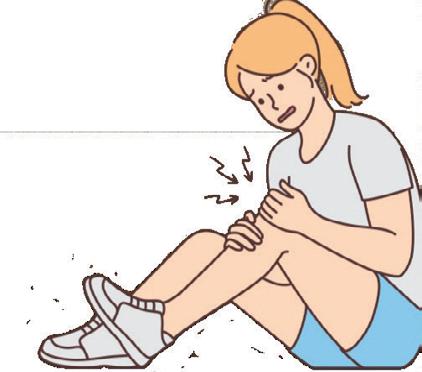
The stronger your muscles around the knee joint are, the more stability and control you will have. Core strength is essential because it enhances stability and helps control the body during dynamic movements. This decreases the strain on the knees and the likelihood of awkward landings. “It doesn’t matter how skilled or strong you are.
Female athletes are generally viewed as “second-class”. This is not only the case in sport, but also in society because sport is an extension of life in general. The way that women are viewed and treated, especially in South Africa, needs to change. Therefore, more attention needs to be paid, more research conducted, and more celebration of the achievements of the likes of Lindani Siziba need to occur.
Women’s sport has progressed significantly in the last few years, but there is still a long way ahead for women to be seen as even close to their male counterparts. Only then will this epidemic be solved.
Betty Molefe
Buckle up everyone! Kyalami is at the top of the list to bring the sound of Formula 1 engines back to Mzansi!
After months of speculation, rumour has it that the FIA (Fédération Internationale de l’Automobile) has approved plans for the Kyalami Grand Prix Circuit, a racetrack in South Africa, to upgrade its facilities to Grade 1. This means that the world's most prestigious racing event, the Formula 1 Grand Prix, could be held at the circuit if it is renovated and meets all the requirements.
The last grand prix held at Kyalami was in 1993, and that was the last time Formula 1 raced on the African continent.
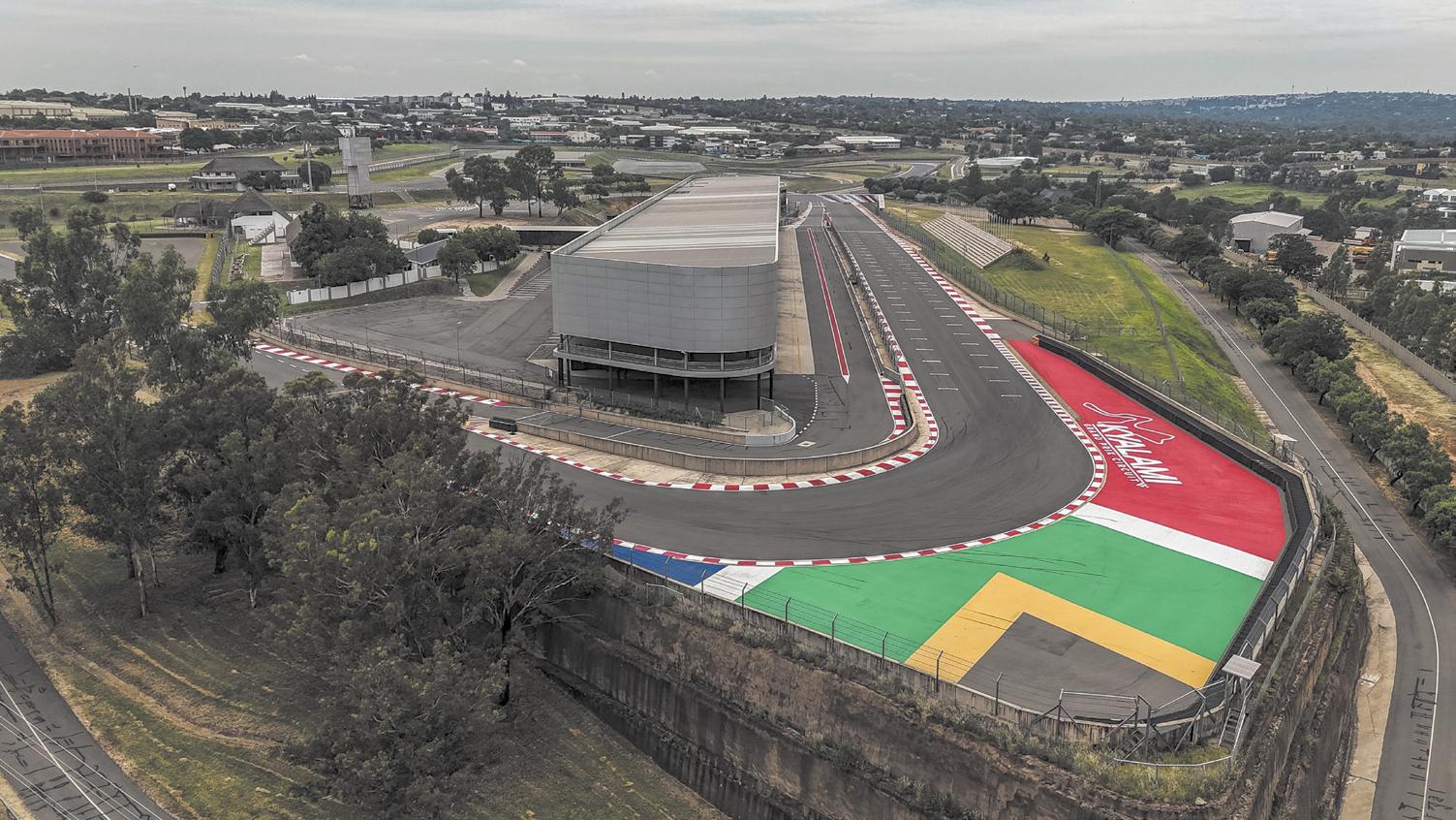
After that, the FIA classified the track as Grade 2, which meant that it could no longer host an F1 grand prix in its condition.
However, the Kyalami Grand Prix Circuit team and UKbased Apex Circuit Design have proposed ideas to upgrade the circuit back to Grade 1. Imagine a scene filled with squealing tires, fast pit stops, famous drivers such as Lewis Hamilton and Max Verstappen, and cameras flashing while everyone is watching. All of this could be taking place right here in Mzansi very soon.

This is not just about fame and speed. It is an opportunity for students in the fields of media, marketing, hospitality, and event management to be able to take advantage of internships, parttime jobs, and behind-the-scenes access to one of the world’s largest sporting events.
Being a part of a moment that restores South Africa’s reputation on the international scene is an extraordinary opportunity, and we should be at the forefront. This is more than just motorsport; it is a moment of pride for our country.
Although the circuit still has several tasks to finish such as improvements, planning, and funding, the recent approval from the FIA is a massive green light, indicating that things are undoubtedly moving in the right direction.
Whether you are a committed supporter or simply enjoy a great vibe, stay focused. It is possible that Formula 1 is racing into our country’s future, and you will want a front-row seat when it happens.
